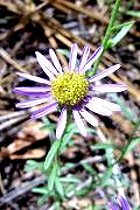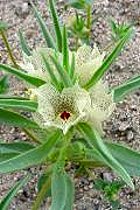-
fa'ba: Latin for the broad bean, Vicia faba, from Latin faba, "bean." This is a native of Europe
where it is more common due to the wetter and cooler climate, although
it is a garden escape in the US. Vicia faba, also called the fava bean, was made famous by Hannibal Lechter's malevolently calm statement in The Silence of the Lambs, "I ate his liver with some fava beans and a nice Chianti," one of the most oft-quoted lines in the history of film.
- faba'cea/faba'ceus: resembling the broad bean.
-
faba'go: from faba, "bean," and the substantival
suffix -ago which is used to indicate a resemblance or property,
thus "like a bean."
-
fa'beri: named for Rev. Ernst Friedrich Ludwig Faber (1839-1899), a German Protestant missionary to China and
|
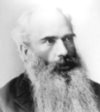 |
|
sinologist. He was born at Coburg in Bavaria the son of a tinsmith and was educated at the University of Basel and the University of Tubingen which was especially known as a center for the study of among other things plant biology and medicine. He also went to the Geographical Institute in Gotha to learn cartography. He determined early to become a missionary and entered the Seminary at Barmen before he was twenty. Not content with theological knowledge alone, he studied botany and zoology to widen his knowledge. After six years of higher education, he sailed |
for China in 1864 for the Rhenish Missionary Society. For many years he evangelized in Canton Province, establishing schools and providing medical assistance to the Chinese when he could. All the while, he studied the botany and zoology of China, and began producing valuable books in Chinese, English, and German. He was fluent in Chinese, German, English and a number of other languages, and his main scholarly activity was on the study of Chinese culture, traditional Chinese literature, and customs. He wrote more than ten volumes of important works in Chinese, and he was an indispensable figure in the area of Sino-Western cultural communication. He saw himself as an intercultural agent who gradually came to be a Christian humanist working with the Chinese rather than necessarily trying to convert them, and he thought that the doctrine of the Gospel was in harmony with the mind of China. He was one of the most prolific writers of the German Protestant missionaries in China and among his works were A Systematical Digest of the Doctrines of Confucius, An Introduction to Chinese Religious Studies, German Daoism and the Historical Nature of Daoism, China in the Light of History, Confucianism, Introduction to the Science of Chinese Religion, Famous Women of China, Botanicon sinicum: notes on Chinese botany from native and western sources, Historical Nature of Daoism, Chronological Handbook of the History of China, and others. He also collected plants there among which was the type specimen of the so-called Faber or Yunnan fir ( Abies fabri). He also made scientific discoveries and although not a trained doctor nevertheless handled numerous medical cases. In 1870, Faber became engaged, but his fiancée died in Germany before they could get married. He remained a lifelong bachelor, pouring his time and energy into what he saw as his calling. Eventually he worked almost exclusively on literary projects, convinced that the way to change the hearts of the educated class in China was through books. His decision seemed confirmed when he developed throat problems that made it increasingly difficult for him to speak. Faber died of dysentery in Qingdao and his remains were buried there in a German cemetery.
-
Fabron'ia: named for Italian naturalist, economist, agronomist, chemist and politician Giovanni Valentino Mattia Fabbroni (1752-1822). He was born in Florence, where he also spent most of his adult life. Little is known about his education and upbringing,but in 1768 he was made assistant to Felice Fontana in the Museum of Physics and Natural Sciences in Florence. In 1775, he collaborated with Felice Fontana (1730-1805) in the founding of the Natural History Museum of Florence. For the next thirty years, Fabbroni served as the Museum’s vice-director under Fontana, who was appointed its first director. He also served as director of the mint of Tuscany. He was a man of varied interests and abilities, and his activities included electrochemical experiments that helped pave the way for subsequent developments such as the invention of the battery and prefigured the acceptance of the work of Alessandro Volta's voltaic pile, studies in currency leading to the creation of the metric system, and proposals related to agricultural and economic reform in Tuscany. In the museum’s lab he researched animal electricity and galvanism. He also maintained an extensive correspondence with a wide variety of individuals abroad including Thomas Jefferson who encouraged him to move to Virginia. He was inclined to accept Jefferson’s invitation until the Duke of Tuscany selected him to travel through England and France to observe scientific and technological progress in each nation. In England in 1778 he became acquainted with Benjamin Franklin, Joseph Banks, Alexander von Humboldt, the Marquis de Lafayette and Joseph Priestley. In 1780 he was in Paris and published new techniques of agronomy and cultivation such as growing different plants together. His ideas contributed to the process of applying chemistry to study the plant world, which led to the development of agricultural chemistry. There were so many things that he was interested in that they can hardly all be listed: meteorology, music, the causes of pestilence, road making, lightning conductors, coal deposits and systems of government. He died in Pisa. The genus Fabronia was published in 1808 by Giuseppe Raddi.
-
Face'lis: etymology uncertain, but possibly a reference to Facelis (Facelina), a goddess in Greek mythology usually depicted with a torch in her hand, referring to the inflorescence which appears at the top of the plant like a hand-held flaming torch. The common name is trampweed and the genus Facelis was published by Alexandre Henri Gabriel de Cassini in 1819.
- Fago'nia: named for Guy-Crescent Fagon (1638-1718), a French chemist, botanist and chief physician to the Sun King
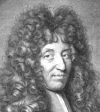 |
|
Louis XIV from 1693 until the king's death in 1715. He was born into a noble family in Paris and his mother was the nephew of Guy de La Brosse who had founded the Jardin des Plantes Medicin-ales. His father was the Commissioner of War Henry Fagon. He studied first in the Sorbonne, under M. Gillot, an eminent doctor, with whom he resided as a student, and who persuaded him to choose the medical profession. He undertook his medical studies at the University of Paris, where he obtained his doctoral degree in 1664. Having shown a very considerable knowledge of botany, |
the same year Antoine Vallot, superintendent of the Jardin des Plantes, sent him to the south of France to search for plants to repopulate the garden. Fagon visited the Alvergna, Provence, the Alps and the Pyrenees. He helped to produce a catalogue of the plants in that garden, published in 1665, entitled Hortus Regius. In 1669 he was made an honorary member of the French Academy of Sciences. From 1671 to 1708 he was professor of botany and chemistry at the Paris Jardin du Roi and from 1699 to 1718 its director. He was appointed first in 1680 as physician to the king’s daughter, then to his wife, and finally in 1693 to the king himself. It was Fagon who pursuaded the king to send Joseph Pitton de Tournefort to the Levant (Greece, Asia Minor and Egypt) where he became one of the first to explore many of the lands of the Mediterranean, the details of which he wrote about in his book A Voyage into the Levant published in two volumes in 1717. Fagon retired from his position as superintendent of the royal garden and as royal physician upon the death of the king and died himself in 1718. The genus Fagonia was published by Carl Linnaeus in honor of him in 1753.
- fairchild'ii: named for physician and amateur botanist and plant collector James Henry Fairchild (1874-1957). David Hollombe provided the following information: “Fairchild was born in Iowa and came to California with his family about 1879. He graduated from Pomona College in 1895 and Rush Medical College in 1905. He practiced in Gervaise and Salem, Oregon, before moving to Claremont, California, some time in the 1920s and was physician for the college for several years" and also in private practice and on the staff of Pomona Valley Community Hospital. He was a friend of Marcus Jones. Marcus Jones in Contributions to Western Botany 16, pp. 39-40, said “Two years ago I took with my friend Dr. Fairchild a trip to the Palomar, a high and short range west of Warner's Hot Springs, in search of lilies and Calochortus. At the hotel we saw a single specimen in a bouquet of a lily of striking peculiarities. The lady at the hotel told me they grew in the meadows. We searched diligently for any lilies in the meadows and found none, and went home disappointed. The doctor has always insisted that the lily is a new one. I have also been sceptical about it, but because of the knowledge of my friend I felt compelled to settle the matter one way or the other. So on a special trip to the mountain in July, 1929, I determined to get it. I take it as pleasure to name this fine lily after its real discoverer, Dr. J. H. Fairchild, of Claremont." The lily was called Lilium fairchildii and that name is now a synonym of Lilium humboldtii ssp. ocellatum.
-
falca'ta/falca'tum/falca'tus: from Latin falcata, "sickle-shaped." A website of the Metropolitan Museum says: "The falcata was a popular type of sword in the Iberian Peninsula from the fifth to the first century B.C. Closely related in form to slashing weapons found in Greece, it is distinguished by the fact that its blade is double-edged for about half of its length, whereas Greek specimens normally have a single cutting edge." A couple of websites refer to it as being falcon-shaped. Taxa currently with one of these epithets in California include Atriplex gardneri var. falcata, Cyrtomium falcatum, Fritillaria falcata, and Juncus falcatus.
-
falcifo'lium: having sickle-shaped leaves.
-
fal'lax: deceitful, deceptive, false, bent, from Latin fallacia, "deception, deceit."
-
Fallo'pia: named for Gabriele Falloppio (1523-1562), often known by his Latin name Fallopius, who was one of the
 |
|
most illustrious and important anatomists and physicians of the sixteenth century. He was born in Modena and, being poor, he joined the clergy and became a canon at the Cathedral of Modena, but soon took up a medical education at the University of Ferrara, receiving his MD in 1548. After working at several medical schools, he became a professor of anatomy at Ferrara, then the following year was called to the University of Pisa. In 1551 he was appointed chair of the department of anatomy and surgery at the University of Padua, and at the same time held the |
professorship of botany and the superintendency of the botanical garden. He dealt much with the anatomy of the head, in particular the eyes and ears. He also studied and contributed much to knowledge about the reproductive organs and discovered the tubes that connect the ovaries to the uterus, now known as fallopian tubes. He was the author of Observationes anatomicae which was published in 1561. Wikipedia adds: “He published two treatises on ulcers and tumors, a treatise on surgery, and a commentary on Hippocrates's book on wounds of the head. In his own time he was regarded as somewhat of an authority in the field of sexuality. Fallopio was the first to describe a condom (in his writings, a linen sheath wrapped around the penis), and he advocated the use of such sheaths to prevent syphilis. In an early example of a clinical trial, Fallopio reported that he tested these condoms in 1,100 men, none of whom contracted syphilis. Falloppio was also interested in every form of therapeutics. He wrote a treatise on baths and thermal waters, another on simple purgatives, and a third on the composition of drugs. He died in Padua. The genus Fallopia was published in 1763 by Michel Adanson.
- Fallu'gia: named for Abbot Virgilio Fallugi (Falugi) of Vallombrosa (1627-1707), originally named Filippo Fallugi, an Italian botanist, monk and abbot at Vallombrosa monastery about 20 miles from Florence, highly respected as a rhetorician, poet, philosopher, and theologian. He was offered the position of botany professor at University of Padua but declined. The monastery was founded in the 11th century by Saint Giovanni Gualberto, Italy's patron saint of forests, destroyed by Napoleon in 1808 and rebuilt in 1815, and closed by the Italian government in 1866. He was the author of Prosopopoeiae botanicae Tournefortiana methodo dispositae (1705). The genus Fallugia was named in 1840 by Stephan Friedrich Ladislaus Endlicher.
- farino'sa: mealy, powdery, from farīna, “flour, meal.”
- farnesia'na: I have been given several references
to the Farnese gardens on the Palatine Hill in Rome, where a man
 |
|
named
Tobia Aldini was the curator. The Farnese family had close ties to
the Jesuit order, and often obtained from priests returning to Rome
from distant lands seeds and specimens of exotic and in some cases
rare plants. Many of these plants were avidly sought after and grown
in private gardens. Aldini published a book in Rome in 1625 with high-quality
engravings describing a number of these plants, including Acacia
farnesiana which was collected in San Domingo. This being said however, David Hollombe has listed an Odoardo Farnese (1573-1626), an Italian nobleman born |
in Rome, as the person this species is named for. He was educated under his uncle Cardinal Alessandro Farnese and resigned the Duchy of Parma in favor of his brother Ranuccio. When his brother died, he became regent for his nephew. He became a cardinal in the Roman Catholic Church in 1591, and participated in the conclave of 1591 which elected Pope Innocent IX, the conclave of 1592 which elected Pope Clement VIII, the first conclave of 1605 which elected Pope Leo XI, the second conclave of 1605 which elected Pope Paul V, and the conclave of 1623 which elected Pope Urban VIII. He was an influential patron of the arts and architecture. He died in Parma and his body was transferred to Rome and buried in front of the main altar of the Church of Jesus. (Photo credit: Geni)
-
farnsworthia'nus: named for Evalyn Lucille Klein Farnsworth (Mrs. Freeland Farnsworth) (1912-2003).
From her obituary in the Porterville Recorder: "Evalyn Lucille
Farnsworth, a resident of Porterville, died in Bakersfield, Monday,
Sept. 1, 2003. She was 91. Mrs. Farnsworth was a lifelong resident
of Porterville. She was a self-employed cattlewomen and rancher for
70 years. She was a lifelong member of the American Hereford Association,
National and California Cattlewomen's Association, founding member
and first president of the Tulare Cattlewomen's Association, and president
and director of the Kem County Cattlewomen's Association. A committed
naturalist, she ran the family ranch which has been in the family
for over 100 years. She graduated from Porterville College with an
AA degree. Survivors include her daughter, Sandra Southard of Porterville; two
grandchildren; and two great-grandchildren. Mrs. Farnsworth was preceded
in death by her husband, Freeland Farnsworth, in 1972." And from
Twisselmann's Flora of Kern County: "Mrs. Freeland Farnsworth,
the former Evalyn L. Klein, and her husband are farmers at Glennville
who are well known among California livestock people for their outstanding
Ace Hi Hereford herd. Mrs. Farnsworth has collected in the Greenhorn
Range since September, 1962, primarily on the ranches she and her
husband own at Woody, White River, and Glennville; many of her collections
are made while doing range riding for the family cattle operations.
Her careful botanizing along the drainage of Cedar and Lumreau creeks
is an excellent example of the value of intensive collection of a
relatively small but critical area; her collections have yielded numerous
Kern County and several Sierra Nevada records. Among them is the type
material for the remarkable jewel flower Streptanthus farnsworthianus."
- farrer'i: named for Reginald John Farrer (1880-1920), a traveller, plant collector, and author of a number of books the best known of which is My Rock Garden. He was born in Marylebone, London, to a well-off family whose home was in Clapham, North Yorkshire. It seems peculiar to me that JSTOR would describe him as Scottish when I can find no connection between him and Scotland. Educated at home, he developed a passionate and lifelong enthusiasm for high places and the mountain plants that grow there. By the age of 10 he was already a well-qualified field botanist with a "fair knowledge of plant anatomy," and at 14 years he made his first rock garden in an abandoned quarry. He gained entrance to Balliol College at Oxford at 17, graduating in 1902, when he made his first excursion to China, Korea and Japan, gaining a belief that rock gardens should be natural rather than formal and that alpine plants should copy as far as possible their native habitats. He published The Garden of Asia in 1904 based on these experiences. Over the next years he wrote prolifically and published Alpines and Bog Plants (1908), In a Yorkshire Garden (1909), Among the Hills (1910), The Dolomites: King Laurin's Garden (1913) and The English Rock-Garden: Volumes 1 and 2 (1913). He traveled widely in the mountains of Italy, France and Switzerland, and in 1908 visited Ceylon where he became a Buddhist. He founded the Craven Nursery in Clapham, which specialized in Asian alpine plants, and endeavored to introduce new hardy rock plants to the British gardening public. In 1914 he set out on an expedition to Tibet and the Chinese province of Gansu, spending two years exploring and collecting. With the outbreak of the first world war after his return from collecting in Gansu, he became a war correspondent. His next books, On the Eaves of the World (2 vols) (1917), and the posthumous The Rainbow Bridge (1921) were based on these Himalayan years. He also drew illustrations and made landscape water-color paintings. Farrer's final voyage was to the mountains of Upper Burma, and he died at the early age of 40 at Nyitadi in the remote Minshan mountains on the Burmese/Chinese frontier as a result of either diphtheria or alcohol poisoning. His life was full of joy, accomplishment, and much hard physical labor which he seemed to thrive on. Wikipedia concludes that “His lasting legacy is a spectacular display of plants from the Himalayas, growing today in a wild display around Ingleborough. Himalayan rhododendron, bamboo and other unusual plants such as Lonicera syringantha and Rodgersia aesculifolia can be seen among Farrer's Ingleborough display while in Clapham village itself Viburnum farreri and Potentilla fruticosa flourish. Farrer was known as an eccentric and in one famous incident, Farrer loaded a shotgun with seeds collected on his foreign travels, and fired them into an inaccessible rock cliff and gorge near the family home in Yorkshire. They did not root, however.” And his biographer, Nicola Shulman, said "He brought rock-gardening into the hearts of the British people." Farrer was buried in the village of Kawnglanghpu in Burma.
- farwell'ii: named for Oliver Atkins Farwell, Jr. (1867-1944), a botanist, pharmacist and librarian born in Boston, Massa- chusetts. Wikipedia says: “Spending his formative years in the Copper Harbor area of Michigan, Farwell developed a lifelong affinity and commitment to the study of Michigan’s flora as both a hobby and occupation. A career employee (1892-1933) of the Parke, Davis and Company (Detroit, MI), Farwell was responsible for the pharmacognosy [the branch of knowledge concerned with medicinal drugs obtained from plants or other natural sources] of raw botanical products. He was also a long standing member of a multiplicity of scholarly clubs with branches pertaining to botanical interests, including the Michigan Academy of Sciences and the National Geographic.” Recognizing his interests, a high school teacher encouraged him to study botany. During the 1880s he collected pteridophytes (spore bearers) while trying out several professions including farming, wood-cutting and engineering. He attended the State Normal School in 1890 and two years later moved to Detroit where he started working for Park, Davis. With a botanical background, he became the company’s botanist and librarian, and was named drug inspector in 1893, remaining at Park, Davis until his retirement in 1933. In 1918-1919 he worked as professor of botany at the Detroit College of Pharmacy. After his retirement he was awarded an honorary doctorate by the College of the City of Detroit. Again quoted from Wikipedia: “Farwell's botanizing took place in and around Detroit, as well as further afield in Michigan, and he became quite an authority on the vascular plants of that state. For many years he took every Wednesday "off" from the pharmacy in order to collect specimens and also took excursions at the weekends. Amongst his most important papers are a series of 17 works entitled "Contributions to the Botany of Michigan" (1894-1940), a series of nine "Notes on the Michigan Flora" (1918-1945), and a further seven called "Botanical Gleanings in Michigan" (1923-1930). Farwell's herbarium is estimated to number some 15,000 specimens but many of these are unnumbered and unmounted. The collection is housed in the Cranbrook Institute of Science in Bloomfield Hills, Michigan. (Photo credit: Cranbrook Institute of Science)
- fascicular'is: see fasciculata below.
- fascicula'ta/fascicula'tum/fasicula'tus:
derived from the Latin word fasciculus, "a small bundle, bunch, or collection," diminutive of fascis meaning "bundles" and describing
the way the leaves are attached to the leaf stem in little bunches
or fascicles.
- fassett'ii: named for Norman Carter Fassett (1900-1954), an American botanist who studied the flora of Wisconsin and was especially interested in aquatic plants. He was born in Ware, Massachusetts, and later moved to Leominster. He received a BSc degree from Harvard in 1922, an MA in 1923, and a PhD in 1925. He worked as a teaching assistant in botany at Harvard and in mycology at Radcliffe College. After getting his doctorate he was appointed instructor in botany at the University of Wisconsin, where he remained for the rest of his life. In 1937 he became a full professor and then herbarium curator. He published over 100 scientific papers and books. Aside from his researches into the flora of Wisconsin, he was interested in aquatic plants from outside the US, and took part in an expedition to Guatemala, El Salvador and Nicaragua in search of specimens, and then to Columbia during WWII as part of the US Chinchona Mission. He co-founded the American Society of Plant Taxonomists and was president at the time of his death. He had suffered for many years from an undiagnosed brain tumor, and although a major operation relieved is symptoms, it eventually caused his demise. His herbarium, numbering some 28,000 specimens, was donated to the University of Wisconsin.
- fastigia'ta: with upright branches, or erect
clusters of twigs or stems. from the Latin fastigium, "a top, summit, slope."
- fastuo'sum: proud, vain, from Latin fastus, "haughtiness, pride.”
- Fatou'a: possibly for Jean Baptiste Ambroise Fatou (1786-1858), a navy doctor and pharmacist. He was born at Château de Versailled in what is now called the department of Yvelines. His father was a pharmacist. Not much is available but he had five sons, and the Fatou family apparently included naval officers and pharmacists. The genus was published in 1830 by Charles Gaudichaud-Beaupré who sailed as botanist on a circumglobal expedition from 1817 to 1820, accompanying Louis de Freycinet, on the ships Uranie and Physicienne. Gaudichaud was known for naming many plant genera after people who had accompanied this expedition, which might explain the derivation of the name Fatoua if Jean Baptiste Ambroise Fatou indeed sailed with him.
- fat'ua: foolish, insipid, worthless, not good, from Latin fatuus, “foolish, silly, simple.”
- faucibarba'ta: from the Latin fauces, "throat, mouth or gullet,"
and barba, "beard."
- fay'ae: named for Fay Agnes MacFadden (née McDonald) (1888-1964), a Canadian/American plant collector, bryologist and fern enthusiast. She was born in Medicine Lodge, Kansas, and grew up in Cripple Creek, Colorado. She briefly studied medicine at the University of Boulder but did not attain a degree, instead marrying mining engineer Joel Parkhurst MacFadden in 1912. They moved to eastern Oregon and then settled in British Columbia. Fay was intensely interested in botany and spent years collecting flowering plants, mosses, ferns and lichens and had cabinets filled with about 5,000 specimens. She was a member of the Canadian Alpine Club, the Sullivant Moss Society and the British Biological Society, and was on the executive council of the National Park Association. She published in The Bryologist, Rhodora and the American Fern Journal. In 1929 the couple relocated to California where they settled in the San Fernando Valley. She continued to collect extensively not only in California but also in Idaho and Oregon. Her attention turned to ferns in her later life and her personal herbarium of over 25,000 vascular plants and 12,000 bryophytes, as well as some 800 lichen specimens, was sold to California State College in Fullerton (Now CSU Fullerton) after her death in Los Angeles in 1964. The herbarium at that institution now bears her name.
- fee'i: named for Antoine Laurent Apollinaire Fée (1789-1874). "Trained as an apothecary, Fée's first professional
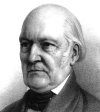 |
|
situation was as a medical orderly in Napoleon's army in Spain. After the end of the war, he left the army and set up a practice as an apothecary in Paris, where he founded the pharmaceutical association of that city. In 1825 he was appointed instructor at the teaching hospital in Lille, and in 1832 became instructor at the teaching hospital in Strasbourg, where he was promoted to MD and professor of botany in 1833. He was also responsible for the botanical garden until Strasbourg was taken by the Prussians at the end of their war with France. After the end of the Franco-Prussian |
war, he went back to Paris. In 1874, shortly before his death, he was elected president of the Société Botanique de France. Fée was a general cryptogamist, doing work on ferns, lichens and fungi. Much of his work was on tropical material and had a medicinal bent." (Extracted from a website of the Illinois Mycological Association) He was the author of Essai sur les Cryptogames de écorces exotiques officinales (Essay on the Cryptogams that grow on Exotic Medicinal Barks) in 7 volumes and many other works, including a review of Systema naturae in 1830 and a biography of its author, Linnaeus, in 1832.
- Feijo'a: named for Don João da Silva Feijó (1760-1824), a Portuguese naturalist, minerologist and soldier born in Brazil as João da Silva Barbosa. He has been variously described as Portuguese, Spanish or Brazilian, and his name has been recorded as da Silva or de Silva, Feijoa or Feijó, João or Jose or Joam. He studied philosophy and mathematics at the University of Coimbra in Portugal and adopted the name Feijó in homage to Benito Jerónimo Feijoo y Montenegro, a Spanish philosopher who at the time was respected among natural history students. In 1778 he and several others were part of a group led by the Italian professor Domenico Agostino Vandelli that founded the Natural History Museum in Lisbon. Vandelli sent a number of naturalists on expeditions to various colonies. Feijó arranged to explore the islands of the archipelago of Cape Verde, and arrived there in June 1783. His work was not facilitated by colonial officials and although he described the geography, topography and flora of the island, his results were criticized by his sponsor. In 1790, Feijó joined the local military establishment. In 1797 his rewritten text regarding the Cape Verde collections was published as "Itinéraire philosophique". He wrote many scientific treatises, sent many plant and animal specimens to scientists in Europe, wrote tracts about saltpeter, gold, and sheep breeding, and helped to develop saltpeter mines which produced an essential component of gunpowder. In 1797 he requested that he be allowed to return to Lisbon, where he collaborated with his old friend Alexandre Rodrigues Ferreira, newly returned from the Amazon, to produce herbarium specimens from the Cape Verde material. In 1799 he went to Brazil where he spent a number of years in the province of Ceará where he initiated a project of great scientific scope called Flora Cearense. He returned to Rio in 1822 and taught natural history, zoology and botany at the Military Academy. After his death, the manuscripts of Flora Cearense were rescued by the naturalist Freire Alemán, having been found in a bakery in Rio where they were serving as wrapping paper. The genus Feijoa was published in 1858 by Otto Karl Berg.
- felipen'se: of or from the San Felipe Valley in San Diego Co.
- fe'lix: from Latin felix, "happy, fortunate, lucky, successful." A communication to me from one of the authors of the taxon Calystegia felix, Mitch Provance, stated that it was his and fellow author Andy Sanders' intention that this epithet have the connotation of 'lucky.' I don't know why it never occurred to me before that there was a relationship between the Latin felix and the common word 'felicitous.' Merriam-Webster says "The adjective 'felicitous' has been a part of our language since the late 18th century, but 'felicity,' the noun meaning 'great happiness,' and later, 'aptness,' was around even in Middle English (as 'felicite,' a borrowing from Anglo-French). Both words ultimately derive from the Latin adjective felix, meaning 'fruitful' or 'happy.' The connection between 'happy' and 'felicitous' continues today in that both words can mean 'notably fitting, effective, or well adapted.' 'Happy' typically suggests what is effectively or successfully appropriate (as in 'a happy choice of words'), and 'felicitous' often implies an aptness that is opportune, telling, or graceful (as in 'a felicitous phrase'). And Wikipedia adds regarding the personal name Felix: "Felix is a male given name and surname that stems from Latin (felix, felicis) and means 'lucky', 'favored by luck' or 'the lucky one'. Its female form is Felicity (English), Felicitas or Felizitas (in German-speaking regions)." Thanks to Mitch for elucidating the intended meaning of this epithet.
- Fendlerel'la/fend'leri/fendleria'na: named for Augustus Fendler (1813-1883), a Prussian-born German plant collector in North and Central America. He had little formal education, took an apprenticeship with a town clerk, then accepted a position with a physician on his way to the Russian frontier to treat cases of cholera. After returning to Berlin to train as a tanner, he sailed for Baltimore in 1836. He lived for several years as an itinerant lampmaker living in the woods, then went back to Europe in 1844 and met the botanist Ernst Meyer at the University of Koenigsberg. Meyer wanted specimens of American plants and Fendler returned to the US and began collecting. Many of his specimens were identified by George Engelmann in St. Louis and through Engelmann he was introduced to Asa Gray in 1846. Acting on a request by Professor Gray, George Engelmann chose Fendler to join a contingent of American soldiers heading for Santa Fe, New Mexico to fight against the Mexicans. Thinking the area somewhat barren when he first arrived in September, he soon altered his opinion and managed to collect more than a thousand specimens over the next year, all within a day's walk from Santa Fe. Asa Gray had been interested in procuring plants from the alpine reaches of the Sangre de Cristo Range, but Indian depradations and the limited blooming season at high altitudes prevented Fendler from satisfying Gray's desires. In 1849 he lost all his collecting equipment in a flood in the Great Salt Lake area and when he returned to St. Louis he found everything else he had destroyed by a disastrous fire that swept the city. He moved to Memphis, Tennessee, and worked in the gas lamp business, and then in 1853 headed for South America with his brother, where he collected plants and made meteorological observations for the Smithsonian Institution in Venezuela. After years there he moved back to the US, purchasing land in Missouri, then returned to Europe in 1871. His adopted country called to him and he settled in Delaware in 1873 and finally ended up in Trinidad where he lived the remainder of his life. He died at the age of 70, but his name has been attached to many southwestern plants. The genus Fendlerella was published by Edward Lee Greene in 1881.
- fenestra'tus: from the Latin fenestra, "a window,"
and the suffix -atus which is added to some noun stems to form adjectives
meaning "provided with," hence "pierced with openings
like windows." The taxon in the California flora with this specific epithet is Streptanthus fenestratus.
- Fenz'lia/fenz'lia: named for Austrian botanist, plant taxonomist and traveller Eduard Fenzl (1808-1879). He was born
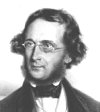 |
|
in Krummnusbaum, Austria. An obituary notes that "He was professor of botany and director of the imperial botanical cabinet, subsequently part of the Imperial Royal Natural History Museum in Vienna, a member of the Vienna Academy of Sciences, and vice-president of the Vienna Horti- cultural Society." He curated the Botanical Museum collections in Vienna, and was a collaborator with Karl Friedrich Philipp von Martius of his Flora Brasiliensis and a co-author with Stephan Endlicher of Sertum cabulicum (1836), Enumeratio plantarum quas in Novae Hollandiae |
(1837), and Novarum stirpum decades (1839). He was the author of Pugillus plantarum novarum Syriæ et Tauri occidentalis primus published in 1842. The genus Fenzlia was published by George Bentham in 1833. The name Gilia fenzlia is a synonym of Linanthus dianthiflorus, Gilia dianthifloura and Fenzlia dianthiflora.
- -fera: bearing something, e.g. nucifera, "nut-bearing,"
mellifera, "honey-bearing," or glandulifera, "gland
bearing."
- ferguson'iae: named for Margaret Clay Ferguson (1863-1951), a plant physiologist who earned her PhD at Cornell
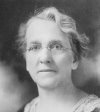 |
|
University (1901) and taught at Wellesley College from 1893 to 1932. Margaret Clay Ferguson was an American botanist best known for advancing scientific education in the field of botany. She also contributed to the life histories of North American pines, and conducted groundbreaking studies on native American pines and plant genetics. She was born in New York, and like many people who gravitated to botany grew up on a farm. She attended the Genesee Wesleyan Seminary in Lima, New York, and at the age of 14 was teaching botany in the local public schools. She
graduated |
in 1885 and was promoted to assistant principal in 1887, and then attended Wellesley College’s “teacher special” program for working teachers. She accepted a position as head of the science department at Harcourt Place Seminary in Gambier, Ohio, in 1891, but returned to Wellesley two years later as a botany instructor. In 1896 she left Wellesley to tour Europe and, in 1897, enrolled at Cornell University, from which she received a BS in 1899 and a PhD in botany in 1901. In 1929, she was elected president of the Botanical Society of America, the first woman to hold that office. She became a professor of botany at Wellesley in 1893, associate professor in 1904, then full professor and head of the department, which positions she held until 1930, retiring in 1932. She received an honorary doctorate from Mount Holyoke. She was elected a fellow by the American Association for the Advancement of Science and in 1943 a member of the New York Academy of Sciences. Her writings consist mainly of papers on plant embryology and physiology. In her later years she spent time in Florida before moving to San Diego where she died of a heart attack in 1951.
- fernaldia'na/ernald'ii: named for Merritt Lyndon Fernald (1873-1950), an American botanist and educator. He was
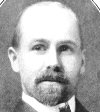 |
|
born in Orono, Maine, on Oct. 5, 1873. His father
taught and was for a while president of the Maine State College of
Agriculture and the Mechanic Arts, which later became the University of
Maine. Fernald attended Orono High School and it was there that he decided to be a botanist. He collected plants around Orono and had two botanical papers published while still at high school. He began his college studies at the State College in 1890;
in February, 1891, Sereno Watson offered him a position at the Gray
Herbarium that would allow him to work and study part-time at Harvard. |
Fernald accepted in March, 1891, and enrolled in Harvard's Lawrence
Scientific School the following fall. He graduated magna cum laude with an BS in
1897 and remained at the Gray Herbarium in one capacity or another
for the rest of his life. He worked as an assistant in the herbarium from 1891 to 1902. as an instructor of botany from 1902 to 1905, as
an assistant professor from 1905 to 1915, and as Fisher professor
of natural history from 1915 to 1947. He was also curator of the Gray
Herbarium, 1935-37, and director, 1937-1947. Fernald is known for
his work on phytogeography. He combined extensive field work with
his herbarium work, concentrating on the flora of eastern North America.
He did much exploring in Quebec in his younger years; when older,
he worked in Virginia. With Benjamin Lincoln Robinson he produced
the 7th revision of Gray's Manual, which appeared in 1907.
He wrote Edible Wild Plants of Eastern North America with Alfred
C. Kinsey, published in 1943. His major work was the 8th revision
of Gray's Manual, published in 1950. Before his death, he was
planning a large work on plant distribution. During his lifetime he produced over 850 papers and memoirs. He was
active in the New England Botanical Club, serving as editor-in-chief
of Rhodora for many years. Fernald married Margaret Howard Grant in
1907. They had three children, one of whom died young. Fernald died
on Sept. 22, 1950.
- fernandin'a: of or from the San Fernando
Valley.
- Ferocac'tus: from the Latin ferox,
"fierce," and cactus, referring to its heavy spines.
The genus Ferocactus was published by Nathaniel Lord Britton and Joseph Nelson Rose in 1922.
- ferocis'simum: the Dave's Garden Botanary site gives "most fierce,
spiniest" for this name.
- fero'cula: from ferox, "fierce,
wild, fearless" and the diminutive -cula, "little, somewhat."
- ferris'iae: named for Roxana Judkins (Stinchfield) Ferris (1895-1978),
an early staff member of the
Dudley Herbarium
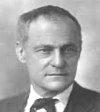 |
|
published
many articles on the molluscs, and with only a high school degree
became "the foremost of American land-shell collectors."
He moved to Kansas at the age of 20 to start a business and worked
as a farmer, freighter and storekeeper. He began working as a reporter
in Illinois in 1872 and became the editor of several papers, including
the Phoenix and the Joliet News, which he later purchased.
His primary interests were land snails, fossils, ferns and cacti.
He made annual trips to the Alleghenies from 1896-1902 and traveled
extensively through southwestern Arkansas, |
Oklahoma, Missouri, Texas, Arizona and New Mexico. "Apparently had a 'rivalry' of sorts
with landshell collectors Annie Law and Mary Andrews (née Lathrop).
According to [H.A.] Pilsbry, "'Ferriss thought that if women could
discover such splendid species, a man ought to find one 'as
big as a teacup, with spines.' To drive in an auto with Ferriss
was according to Pilsbry 'an education for the nerves. Very few
large stones were missed.' The ultimate field biologist, he had
great endurance, an unfailing optimism, and an exhaustless store of
entertaining talk. The prospector or cattle man who chanced to drop
into camp often stayed, swapping reminiscences around the fire far
into the night -- tales of the Indian times, of Apache Kid, Cochise
Stronghold, and of course, of the search for lost mines. Jailed in
1877 for an unpopular editorial which apparently offended a local
political boss. A fiery prohibitionist, his paper was the terror of
grafters and saloon keepers. National Chairman of the Populist Party
Convention in 1904." (The foregoing was from an article by H.A.
Pilsbry in a 1926 issue of Nautilus.) Ferriss was also president
of the American Fern Society from 1905 to 1908.
-
ferrugin'ea: rusty red, from the Latin ferrugineus meaning "relating to iron," from ferrum, "iron."
-
Festu'ca: from the Latin festuca, "a grass
stalk or straw." Wikipedia says: "The word festuca is a Latin word meaning 'stem' or 'stalk' first used by Pliny the Elder to describe a weed. The word Festuca first appears to describe grasses in Dodoens' Stirpium historiae pemptades sex, sive libri XXX in 1583. However, the plant Dodoens described as Festuca altera is actually Bromus secalinus. Other authors before Linnaeus used the name to describe other various species of Bromus. In the first edition of Genera Plantarum, Linnaeus describes seven species of Festuca, five of which are truly Bromus grasses with the other two being Festuca gigantea and Festuca pratensis. In 1753 the genus is accepted as first being formally described, in Linnaeus' Species Plantarum. Eleven species were described, with F. ovina being the type species."
-
fe'ta: this specific epithet was not explained in the original publication,
but the Latin fetus means either "pregnant, productive"
or "breeding, bearing, producing."
-
feudg'ei: named for John Byron Feudge (1871-1949).
A San Bernardino
Tribune obituary provides the following: He was born on a ranch in the Warm Springs area east
of San Bernardino of parents who were early pioneer residents of the
valley as a young man he entered the railway mail service and remained
until retirement, after which he studied native western plants and
was for several years president of the Samuel B. Parish Botanical
Society. He was a member of the San Bernardino Mineralogical Society
and was also interested in avian fauna. He was a source of help for
local school children on questions of natural history, and although
not professionally trained he was consulted by teachers and even professional
scientists.
-
Feuill'eea: named for monk, explorer, astronomer, geographer, and botanist Louis Éconches Féuillee (1660-1732). His
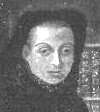 |
|
name is sometimes spelled Feuillet. He was born in Mane, near Forcalquier, and educated at the Minim convent of Mane, in Provence. He was a member of the Order of the Minims, a Roman Catholic religious order of friars founded by Saint Francis of Paola in fifteenth-century Italy, spreading to France, Germany and Spain and continuing to exist today. He was taught astronomy by Jean Mathieu de Chazelles and botany by Charles Plumier. He was sent by order of the king to the Levant to establish the correct geographical positions of seaports and cities, and then took similar |
trips to the Antilles in 1703 and the northern coast of South America in 1704, returning to France in 1706. He was granted the title of Royal Mathematician from the King and quickly set sail for a more extended excursion along the western coast of South America, reaching Argentina, rounding Cape Horn and arriving at Concepción, Chile in early 1708. He conducted astronomic, botanical, and zoological surveys and then continued on to Peru, and was back in France in 1711. He was granted a royal pension and the king built an observatory for him at Marseilles. In South America he mapped islands, rivers and towns, sketched landscape views, described fruits like Fragaria chiloensis, the Concepción strawberry, and collected plants. He made highly significant discoveries about the salinity of ocean water, the difference in salinity between the Atlantic and the Mediterranean, and the large circular current skirting the Chilean and Peruvian coasts which is now called the Humboldt current. In the field of botany he scientifically described many South American plants for the first time. He made his fourth and final voyage to the Canary Islands in 1724 to determine the meridian at Hierro. He was the author of Journal des observations physiques, mathématiques, et botaniques (1714) and Suite du Journal (1725). The genus Fevillea in the Cucurbitaceae was named for him by Linnaeus in 1753 and the genus Feuilleea in the Fabaceae was named for him by Kuntze in 1891. He died at Marseilles.
- Fibich'ia: named for Johann Fiebig (1756-1792), a German doctor and naturalist. According to Lotte Burkhardt's well-researched Encyclopedia of Eponymic Plant Names, he was a professor of natural history and botany, and an electoral court judge in Mainz. He reestablished a botanical garden there, created a library with his successor Bernhard Sebastian von Nau, and wrote a 'Handbook of Minerology.' The genus Fibichia was published by Georg Ludwig Koeler in 1802.
-
fibrillo'sa/fibrillo'sus: composed of fibers, fibrous.
-
Fi'cus: a Latin name for the fig. The genus Ficus was published by Carl Linnaeus in 1753.
-
fi'cus-in'dica: Indian fig. An article entitled "Prickly Pear: the thorny side of the Opuntia ficus-indica," says "Originally, in South America, the Aztecs had given the name 'nopal' to the prickly pear tree. Later, in Europe, it was first called 'ficus Indica,' meaning the 'Indian fig tree.' Indeed, at that time, Christopher Columbus was convinced to have discovered this plant on the lands of India."
-
filagin'ea/filagin'eus: having wooly threads, from filum, "a thread."
-
filaginifo'lia: with leaves like those
of Filago, referring to the white, wooly threads on the leaf
surfaces.
-
filagino'ides: resembling genus Filago.
-
Fila'go: from the Latin filum, "thread,"
referring to the hairs. The genus Filago was published in 1753 by Pehr Loefling.
-
Fil'aree: a common name which is a corruption of the American Spanish name alfilerilla, "a needle,"
in reference to the needle-like seed pod, according to Merriam-Webster.
-
filicau'lis: with a thread-like stem.
- filicifo'lia: from filix, 'fern,' and folium, 'a leaf,' from the resemblance of the leaves to a fern.
-
filiculo'ides: I believe this means fern-like or looking like a fern,
from the Latin filix or filicis, "a fern."
From David Hollombe: " Azolla filiculoides was described
by Lamarck as having the aspect of a very small fern and also describes
the branching as filiciform (fern-shaped) bouquets or rosettes."
-
filif'era: composed of or bearing thread-like
structures.
-
filifo'lia/filifo'lium/filifo'lius:
refers to the thread-like foliage.
-
filifor'me/filifor'mis: thread-like.
-
fil'ipes: from the prefix fili- meaning
"threadlike" and pes, Latin for "foot,"
hence "with threadlike stalks" (compare brevipes or "short-stalked,"
crassipes or "thick-stalked," gracilipes or "slender-stalked,"
trichopes or "hairy-stalked", and planipes or "flat-stalked").
-
fi'lix-fem'ina: from the Latin filix,
"a fern," and femina, "feminine," this
taxa is called lady fern from the sporangia which are enclosed or
hidden in a manner which is deemed to be feminine.
- fi'lix-mas: from the Latin filix,
"a fern," and mas, "maculine," this
taxa is called male fern, being robust in appearance and vigorous in growth, as the plant was thought to be the male version of the common lady fern Athyrium filix-femina.
-
fimbria'ta/fimbria'tum/fimbria'tus:
fringed, from fimbriae, “fibers, threads, fringe.”
-
fimbriola'ta: fringed with very fine hairs.
-
Fimbristy'lis: from the Latin fimbriae, "shreds, fringe,"
and stilus, "style," in reference to the ciliate
style. The genus Fimbristylis was published by Martin Vahl in 1805.
-
finch'iae: named for Ann Mary White Adams Finch (Mrs. Alfred James Adams, Mrs. John Milton Finch) (1865-
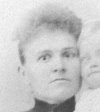 |
|
1930). She was born Ann Mary White in Fall Creek, Lane County, Oregon. In 1880 she married her first husband, Alfred James Adams, who was a farmer. In 1913 she married her second husband, John Milton Finch, who was a blacksmith. Her great-great-granddaughter, Dr. Joanne Gass, professor emerita of english and comparative linquistics at CSU Fullerton, says: “Granny Finch was an amateur botanist who classified rock plants in the Southern Oregon Mountains. The Lewisia finchii, a type of bitterroot, bears her name, as does a weeping spruce, found only in the Bolen Lake |
region of Southern Oregon, called Brewers Anna.” She died in Grant's Pass, Oregon. (Photo credit: Find-a-Grave)
-
Firmia'na: named for Carl Joseph Gotthard von Firmian (1716-1782), an Austrian/Tyrolean noble, politician, diplo-
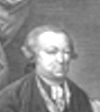 |
|
mat, art collector, painter, engraver and bibliophile who was a patron of the arts and of the Padua botanical garden. He was born in Mezzocorona in Italy and was educated in the Abbey School of Ettal in Bavaria, and then at Innsbruck, Salzburg and Leiden University. His proper name was Karl Gotthard von Firmian, and in Italy was known as Carlo Giuseppe di Firmian. He was the nephew of Leopold Anton von Firmian, Archbishop of Salzburg, who was a great lover of science and the arts. He was also related to Leopold Maximilian von Firmian, Archbishop of Vienna. After attending |
university he traveled extensively through France and Italy in the early 1740s, after which he was attached to the imperial court at Naples in 1746. He was recruited in 1753 by Francis I, Holy Roman emperor, as ambassador to Naples, then in 1758 he was appointed as minister plenipotentiary to the Austro-Hungarian Empire and governor-general of Lombardy, and served for many years until his death. He is remembered as an avid promoter of the arts and sciences, patronizing both the artists Johann Joachim Winckelmann and Angelica Kauffman. Mozart first performed for Firmian, probably at his Palazzo Melzi in Milan, on 12 March 1770; later performances for Firmian are known but not certainly dated. Firmian not only presented Mozart with an edition of the complete works of the poet Pietro Metastasio, but his patronage secured for Wolfgang the commission for Mitridate, re di Ponto K87. He also provided Mozart and his father with letters of recommendation on their first two Italian trips. From the painter Andrea Salvatore Aglio, he commissioned a Virgin of Bovilli and a Birth of Maria de Medici, Queen of France, copy of the large canvas by Rubens. He died in Milan and his tomb was placed in the church of San Bartolomeo. During the Napoleonic occupation of Lombardy, his monument was removed as part of an effort to expunge any signs of prior Austrian governance. After 1815, it was returned to its place. At his death, he had accumulated a large collection of paintings and a substantial library of some 40,000 volumes. The genus Firmiana was published by Giovanni Marsili in 1786. (Photo credit: Geni)
-
fisch'eri/fischeria'na/fischeria'num: named for Friedrich Ernst Ludwig von Fischer (1782-1854), a German botanist
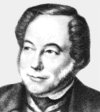 |
|
born at Halberstadt in the Hartz region. His father was a preacher and a writer, and he was educated at home until he entered the University of Halle. He continued to study medicine after the death of his parents and graduated with a medical degree in 1804. It appears that he was always drawn by a love of natural history to medicine but had little desire to actually practice it, so was quick to accept an offered position as director of Count Razumoffsky's botanic garden in Gorenki (near Moscow), and moved to Russia. He immediately began to publish papers on certain flowering plant genera, |
and commenced a work on the rare plants of Siberia, before producing a catalogue of the plants in the botanic garden in 1808. In 1815, he was elected a corresponding member of the Royal Swedish Academy of Sciences. He toured western Europe in 1821 and visited academic and botanical institutions in England, France and Germany. On his return in 1823 he was appointed by Tsar Alexander I as director of the newly formed Imperial Botanic Garden in St. Petersburg. He was involved in the founding of the herbarium and library and sending scientific missions into the interior of Russia for the collection of plants and seeds. He also brought much material to his new institution from the Gorenki garden. He was married in 1820 to the daughter of the Russian minister in Hamburg and in 1821 was the author of Monographia Zygophyllearum. From 1835 until 1845 he and his colleague, Carl Anton Meyer, produced an annual Index Seminum of the plants at the garden which included the descriptions of new acquisitions and in particular those from Siberia. In 1841 his status in the Royal Swedish Academy of Sciences was changed to foreign member. In 1850 he resigned from the directorship of the garden and for his final years worked for the Ministry of the Interior as medical councillor and continued to publish taxonomic and floristic works. He was also honored with the generic names Fischera and Fischeria.
-
fish'iae: named for Fanny Emily Fish Irving Trollope
(1829-1905), who apparently discovered the taxon Polygala cornuta var. fishiae near Todos-Santos
Bay, Lower California. The following information comes from an article
by David Hollombe: Fanny Emily Fish was born June 17, 1829,
just north of present-day Birmingham, Michigan. She was a very popular
young lady and unusually well-educated for those times. Though she
would have liked very much to have been able to attend college her
mother's poor health kept her at home. Sometime after her father's
death, which occurred in 1861, her younger brother, William, married
and moved to Ovid, Michigan, in 1865, and Fanny, her mother and her nephews
Spencer and Charles (sons of her brother Henry, who died in the Civil
War) joined him there a few years later. William brought his wife
and daughter to Santa Barbara, California, in 1874, coming by way
of the Isthmus of Panama, and in 1876 they moved to El Sauzal, near
Ensenada. As William's daughter, Anna Roberts, later recalled, "They
carried not only a deck load of lumber for a ranch house, but chickens
and pigs." Meanwhile, about 1878, Spencer moved to Hillsboro, Illinois,
and then bought a farm nearby in Butler. Fanny went with him and stayed
a while, but then traveled to California, visiting cousins in Martinez,
and then joined William at El Sauzal in July, 1879. On April 10, 1882,
a party of Americans arrived at El Sauzal on a botanizing expedition
and were welcomed by the family. The group consisted of Marcus Eugene
Jones, Dr. Charles Christopher Parry, Cyrus Guernsey Pringle and Pringle's
assistant. They had also hired a driver and cook in San Diego, a nurseryman's
son named Charles Russell Orcutt who was later to become an enthusiastic
botanist. (Later in the expedition, Jones quarrelled with the others
over which had first discovered a new rose, and then 'held up' Orcutt
at gunpoint! A fascinating and detailed account, written by Dr. Lee
Lenz appeared in Aliso Vol. 10, no 2, in 1982. Some weeks
later Dr. Parry, remembering that Fanny had shown an interest in botany,
wrote offering to send her books and papers in exchange for fruiting
specimens of the plants the botanists had collected in flower. She
enthusiastically agreed. Hoping to insure her continued interest,
he named a plant after her, Polygala fishiae, which she had
collected at El Sauzal, near the southern limit of its distribution.
Parry also returned the following winter in person, with the same
purpose in mind. Fanny's interest in botany did not fail but, alas,
the ranch did. Frequent and severe drought limited the ranch's productivity,
and there was no demand locally for what the ranch did produce. In
1883 the Fish family returned to Alta California [as opposed to Baja
California], settling this time at Tecolote Canyon, just north of
San Diego. Fanny Fish continued to botanize at San Diego. She corresponded
with her botanical acquaintances and was visited by other local naturalists.
She especially liked young Charles Orcutt, to whom she sold most of
her botanical collections. She even wrote up a few random thoughts
about watching ants at work, and Orcutt published them in his journal, West American Scientist. On April 8, 1886, she left San Diego
by train, and arrived in Hillsboro, Illinois, where her brother Edmund
lived, three days later. After only a few days she went on to her
nephew Charles' house in Butler, and stayed with his family until
late October, when she left to visit her brother Charles in Elkhart,
Indiana. Her diary ends with Thanksgiving day, 1887. Soon after, she
returned to Birmingham, Michigan, where on May 23, 1888, she married
Hugh Irving, a retired hardware merchant. After Mr. Irving's death
she met again her childhood sweetheart, Mr. Albert Trollope, of Detroit,
after a separation of fifty years, and they were married in November,
1901. Her death occurred July 5, 1905, not far from the spot where
she was born.
- Fis'sidens: probably from fissi or fissus, "a split or cleft," and dens, "a tooth," so meaning "split tooth" apparently alluding to the peristome. The genus Fissidens was published by Johann Hedwig in 1801.
-
fissurico'la: from the Latin fissura, "a split, chink,
fissure," and the -cola suffix indicating "a dweller
or inhabitant of." The author of Memecylon fissuricola, Robert Douglas Stone, says "The epithet fissuricola is a compound derived from the Latin noun fissura meaning 'crevice' and the agent noun -cola meaning 'inhabitor.' It functions as an adjective and means “crevice-dweller”, in reference to the habitat in shallow soil and crevices of calcareous rock." The taxon in the California flora is Carex fissuricola commonly called cleft sedge or fissured sedge, and one of its frequent habitats is rocky streambanks.
-
fistulo'sa/fistulo'sus: hollow or tubular, usually referring to the stalks, from fistula, "pipe, tube." A website called Ozark Edge Wildflowers says " Fistulosa means hollow or pipe-like and describes both the hollow tube of the corolla and the hollow stem."
-
fitch'ii: named for the Reverend Augustus Fitch (1794-1874), an Episcopal clergyman. He was born either in New York City or Stamford, Connecticut, and was ordained as an Episcopal deacon in 1818. From 1819 to 1821 he was the rector in Bellville, New Jersey, and from 1821 to 1835 head teacher of an academy at Bloomingdale, New York. He was sent to St. Charles, Missouri, by the Board of Missions, arriving in December, 1836, and left the following year, then lived on Staten Island. At some point he went to California and collected plants there and in Oregon in 1846-1849, with little or no record of church work there. He had obviously acquired a significant amount of botanical expertise and apparently did a considerable amount of work paticularly on California trees and shrubs. I have no idea where he received whatever botanical education he had, and appears to have shifted from his religious duties to botany. He was in and out of California until 1852 and then returned to New York. He wrote two articles that were published in the Transactions of the Institute of New York: "The shrubs, flowers and plants of California"and "Trees of California & Oregon," and he corresponded with John Torrey. Hemizonia or Centromadia fitchii was published for him by Asa Gray.
- flabellar'is: fan-like, fan-shaped, flabellate, from the Latin flabellum for "a small fan,"
and the -aris suffix meaning "belonging or pertaining
to" which is used after word stems ending in 'l' such as fascicularis,
pilularis or axillaris.
-
flabellifo'lia: bearing fan-shaped leaves.
-
flabellifor'mis: shaped like a small fan.
-
flac'cida/flac'cidum/flac'cidus: flaccid, soft, from Latin flaccidus "flabby, pendulous, weak, drooping," from flaccus, "flabby, flap-eared."
-
flagellar'is: whiplike, from the Latin flagrum, "whip," and -aris, "resembling."
-
flam'mea: from flammeus, "flame-colored."
-
flam'mula: from Latin flammula meaning "a small flame" and uncertain as to
its application but possibly alluding to a burning taste of some species
with this name. The website First Nature says "may be a reference to the inflammation caused in some humans if the sap comes into contact with their skin," and Gledhill says either "little flame, an old generic name for lesser spearwort, some suggest a reference to the burning taste" or "flame-colored." The taxon in California with this epithet is Rancunculus flammula. All parts of the plant are poisonous, and touching or eating any part of the plant may irritate the skin or cause stomach upset.
-
Flaver'ia: from the Latin flavus for "pure yellow."
The genus Flaveria was published by Antoine Laurent de Jussieu in 1789.
-
flaves'cens: becoming yellow, yellowish, from Latin flavesco, "becoming yellow."
-
flavico'mus: yellow-haired.
-
fla'vida/fla'vidum: yellowish.
-
flavocaula'tus: yellow-stemmed.
-
flavocula'ta/flavocula'tus: from the Latin flavus, "yellow," and oculus, "eye,"
thus "yellow-eyed." In Caifornia there is Oreocarya flavoculata and Lupinus flavoculatus.
-
flavovir'ide: yellow-green.
-
-
fleming'ii: named for Guy Lowd Fleming (1884-1960).
The following is quoted from Carl Heilbron's History of San Diego
County, published in 1936: "Guy L. Fleming has long been interested in
the preservation and development of the natural beauties of Southern
California. Coming to San Diego in January, 1909, his first job was
with the newly founded Little Landers Colony at San Ysidro. He was
associated with this organization for about two years. Here he met
George P. Hall, formerly one of San Diego County's first horticultural
commissioners, but at the time retired from active work. Inspired
and encouraged by Mr. Hall he became interested in the study of horticulture.
In February, 1911, he started work in the nursery of the first San Diego
Exposition and ultimately became foreman of one of the landscape divisions.
He worked for the Exposition until 1916, during which time he carried
on an intensive study of the horticulture of the Southwest, making
a specialty of the native trees and shrubs. In 1914 he was elected
a member of the San Diego Society of Natural History, then a small
organization of less than thirty members, and became actively interested
in its affairs and growth. After the Exposition he engaged in horticulture
and landscape work, for a time serving as a horticultural inspector
for the county. In the summer of 1916 he, with others, started the
movement for the preservation and protection of the rare Torrey pines,
which resulted, in 1921, in his being retained by the late Miss Ellen
B. Scripps as custodian of the Torrey Pines Reserve, an area which
included lands belonging to Miss Scripps, on which the finest stands
of Torrey pines are growing, and the original Torrey Pines Park, dedicated
in 1899. This position he held until July, 1933, when he was appointed
district superintendent of the State Division of Parks. Through a
bequest by Miss Scripps he still resides at Torrey Pines Preserve.
In 1924 he was instrumental in getting the Soledad estuary and beach
at the northern limits of the city of San Diego and the cliffs and
canyons south of the original Torrey Pines Park added to the Preserve,
giving to the public a natural park of approximately 1,200 acres having
a sea frontage of three miles and one of the finest and longest bathing
beaches in California. While custodian he carried on botanical and
natural history research and became a recognized authority on these
subjects. Botanists and scientists from many parts of the world have
visited him at Torrey Pines Preserve. In 1928, when the State Park
acquisition program was started, he was given permission by Miss Scripps
to assist the State Park Commission in its survey and acquisition
of state parks in southern California. This work led to his appointment
as superintendent when the Southern District was formed. The position
is a most important one and involves a great deal of traveling and
careful planning and inspection. Mr. Fleming's district includes twenty
state park areas extending from Monterey County to the southern limits
of the state. A native of Nebraska, Mr. Fleming was born at Ayr on
May 27, 1884, the son of James A. and Georgia (Lowd) Fleming. The
father was a contractor and builder and brought his family to the
Pacific Coast in 1896, locating in Oregon. Both parents came to La
Jolla in 1922, his mother still living there, but his father passed
away in 1935. Mr. Fleming's education was received in the schools
of Oregon. He is a fellow of the San Diego Society of Natural History, a member of the Western Society of Naturalists, and actively affiliated
as a collaborator with many scientific institutions and organizations.
He has three children: John R., Margaret E., and Elizabeth Fleming,
by a former marriage. In 1926 he married Margaret Doubleday Eddy."
-
flett'ii: named for Scottish/American botanist John Bakkie Flett (1856-1942). He was born in the Orkney Islands in Scotland, and came to the US about 1874. He received an AB degree with honors in chemistry from Hamilton College in 1885, was a teacher and principal in New York state schools and moved to Tacoma, Washington in 1893. He was a high school teacher of botany, biology and geology in Tacoma public schools, a National Park ranger between 1913 and 1921, and an enthusiastic explorer of Mt. Rainier and the Olympic range, which he went into in 1896 with a party of gold hunters. He helped form the Tacoma branch of The Mountaineers in 1912. From a Washington Universties website: “Flett was an avid climber who was one of the first to summit Mount Olympus in 1907. He made a trip to Mount Rainier in 1908 which Curtis used a reference point when planning the 1909 Mountaineers' Rainier trip. Flett wrote to Curtis offering advice on the best route: ‘Knowing the ground as well as I do you will pardon me if I offer a little advice. In the first place it is a very strenuous day's march from Moraine Lake to the 'Camp of Storms.' I fear it will be too much for the day preceding the real climb to the summit. It would be impossible to descend the mountain and reach Moraine Lake the same night. The Winthrop Glacier is quite broken up. It would be madness to attempt to cross this at night. My suggestion is that you make camp at or near 'Snipe Lake' in the inter-glacier basin." He died in Zenith, Washington. He had at least six species, mostly from the Pacific northwest, named for him, but in California the taxon Isoetes flettii is now considered a synonym of Isoetes occidentalis.
-
Fleur'ya: one source (F.N. Hepper and Fiona Neate's Plant Collectors in West Africa) says this generic epithet was dedicated to the French plant collector Francis Fleury (1882-1919) who died during an expedition to India and Malaya, however the name was published in 1830 by French botanist Charles Gaudichaud-Beaupré, so that's not possible. A second source, Thesaurus literaturae botanique omnium gentium by George August Pritzel, states that the genus is named for a J.F. Fleury (fl. 1819), a French botanist and writer on orchids, which attribution is repeated in The Century Supplement to the Dictionary of Gardening, Vol. 10, by George Nicholson, A Flora of Manila by E.D. Merrill and The Bahama Flora by Nathaniel Lord Britton. But according to information unearthed by David Hollombe, Charles Gaudichaud-Beaupré named a number of new genera after officers involved in the 1817-1820 circumglobal expedition led by Louis de Freycinet on which he sailed as botanist, among whom was a French naval officer Camile Fleury, so this would seem to be a much greater likelihood for the derivation of this epithet. Freycinet's Voyage autour du Monde lists the crew of the Uranie in which it notes for C. Fleury: "pilotin (?); appointed provisional candidate-volunteer on January 1, 1820; naval cadet on May 1, 1821; and ensign on January 15, 1823." This accords with An Etymological Dictionary of Australian Plant Genera and F.A. Stafleu's Index Herbariorum which state that the genus was named for C. Fleury, a merchant service apprentice on the Uranie, one of the two ships involved in the expedition. And since the genus was published in Gaudichaud's description of the expedition Voyage autour du Monde, entrepris par Ordre du Roi, . . . Execute sur les Corvettes de S.M. l'Uranie et la Physicienne . . . par M. Louis de Freycinet, this commemoration makes sense. Fleury was listed in this work as a member of the crew and was elevated to the rank of ensign during the course of the expedition. Another possibility put forth by David is Jean André Fleury (1763-1835?), member of the Academy of Medicine. Not explained in the original publication. The genus Fleurya is in the family Urticaceae and was published by Charles Gaudichaud-Beaupré in 1826.
-
flex'ilis: flexible, pliant, limber, from Latin flexilis, "pliant, pliable, supple, flexible."
-
flexuo'sum/flexuo'sus: tortuous, zigzag, from flexuosus, "bent, curved."
-
flocco'sa/flocco'sum: wooly, from the Latin floccosus, "bearing soft hair or wool."
-
Floerk'ea: named for the German lichenologist Heinrich Gustav Flörke (Floerke) (1764-1835), a botanist and pro-
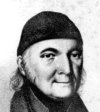 |
|
fessor of botany at Rostock and author of De Cladoniis Difficillimo Lichenum Genere Commentatio Nova (1828), Deutsche Lichenen gesammelt und mit Ammerkungen (1815), and Beschreibung der deutschen staubflechten (1807). From 1775 to 1778 he studied theology, philology and mathematics at the University of Bützow and then until 1793 he was the private tutor for Gustav Friedrich von Oertzen at Göttingen, Kittendorf and Kotelow. After being a pastor for several years he studied medicine and natural sciences at the University of Jena. For the next seventeen years he was a |
private scholar and author. In 1816 he succeeded Ludolph Christian Treviranus (1779–1864) as professor of natural history at the University of Rostock, where he remained for the rest of his life, also holding the position of director of the botanical garden. He specialized in the field of lichenology, being known for his investigations of the genus Cladonia. For a number of years Flörke was an editor of "Oekonomische Encyklopädie", an encyclopedia initiated by Johann Georg Krünitz (1728–1796). He was also a member of the German Academy of Sciences Leopoldina and the Russian-Imperial Society of Naturalists, and the librarian of the Society of Friends of Nature Research in Berlin. His name is associated with the wildflower genus Floerkea, published by Constantine Samuel Rafinesque in 1808, and also the lichen species Cladonia floerkeana.
-
floribun'da/floribun'dus:
from floris, "flower," or florere, "to
flower," with the Latin adjectival suffix - bundus used
in the sense of doing or action accomplished, and thus meaning "profusely
flowering, producing or having produced abundant flowers."
-
flor'ida/flor'idum/flor'idus:
florid, ornate, flowery, free-flowering, producing an abundance of flowers. It cannot be discounted that for some taxa this epithet might also relate to the state of Florida.
-
florida'na/floridan'us/floridan'um: of or from Florida. The species in California are Sporobolus floridanus called Florida dropseed and Stachys floridana called Florida bettony or Florida hedgenettle.
- floro'sa: from florosa, "abounding in flowers, profusely flowering," from flos, "flower, blossom."
-
-florus: having flowers.
-
flowers'ii: named for Utah botanist Seville (“Bill”) Flowers (1900-1968) (christened Bradnum Saville Flowers),
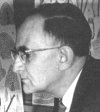 |
|
a professor of botany at the University of Utah from 1936 until his death in 1968, and the foremost authority of his time on cryptogamic botany in the intermountain region. He was an accomplished morphologist, ecologist, agrostologist and systematist born in Salt Lake City. He spent part of his childhood in Long Beach, California, when his mother was advised by her doctors to live for a time at sea level for her health. He roamed the foothills and nearby canyons gaining a firsthand knowledge of nature and the common local plants and developing a passionate desire to know the |
flora and fauna. He graduated from East High School and began attending the University of Utah in 1920 where he spent two years in the School of Engineering and took courses in zoology and botany. Since there were few courses in botany available, he made the unusual move of returning to high school where he took every course available taught by Albert Osbun Garrett, head of the science program there. One summer he was a student at the alpine school at Aspen Grove conducted by Brigham Young University. That session included the guest lecturer Dr. Henry C. Cowles, an internationally known plant ecologist from the University of Chicago. The following two summers Dr. Cowles taught at the Utah State Agricultural College at Logan and Flowers followed him there. By adding together courses at East High School, the University of Utah, Brigham Young University and Utah State Agricultural College, he fulfilled a major in botany acceptable to UU and he was granted an AB degree in 1925. During the summer of 1925 he attended a summer course on mosses at BYU taught by A.O. Garrett and thanks to a dissertation entitled The Moss Flora of Mt. Timpanogos he was granted an MA in 1926. He was becoming recognized as a moss authority. He had gathered numerous specimens which formed the nucleus of a collection which by the time of his death amounted to some 5,000 items. In 1926 he began teaching zoology and botany at Carbon County High School in Price, Utah, and remained there until 1930. He spent the academic years of 1930-1931 and 1931-1932 at the University of Chicago studying again under Henry Cowles, and attained a PhD degree in 1932. He returned to Carbon County High School where he taught until 1936. During the summer of 1934 he studied and worked with Dr. Abel Joel Grout, the preeminent authority at the time on the mosses of North America. In 1935-1936 he was chosen president of the Biological Sciences Section of the Utah Educational Association, State Chairman of the National Education Association Science Department, and the instructor of the first bryology course offered at the University of Utah, where he remained for the next 32 years. He was a member of the Utah Academy of Sciences, Arts and Letters, the American Institute of Biological Sciences, the Phycological Society of America, the American Fern Society, the American Society of Plant Taxonomists and the International Association for Plant Taxonomy. Early in his career he made a classic study of the vegetation of the Great Salt Lake region that led in later years to his participation in the ecological studies at Dugway Proving Grounds in western Utah. Still later he had charge of the pre-dam vegetative surveys of several reservoir sites along the Upper Colorado River, including Glen Canyon, which was later submerged under Lake Powell. Many of his publications appeared in The Bryologist. Among his works were The Hepaticae of Utah, Ferns of Utah, Ecological studies of the flora and fauna of Flaming Gorge Reservoir basin, Utah and Wyoming, A survey of vegetation in the Navajo Reservoir Basin, Mosses: Utah and the West, and Mosses of the Great Salt Lake Region. Two months short of his retirement from teaching, he suffered a massive heart attack and died. He was truly one of the giants of American bryology, but of all the things he loved to do, teaching was probably his preeminent passion, and his work lives on in the careers and accomplishments of many of those who passed within his orbit. (Photo credit: "In Memorium: Seville Flowers, 1900-1968" by William H. Behle in The Great Basin Naturalist, Vol. 44, No. 2, 1984)
-
flu'itans: floating, from Latin fluitans, "flowing, waving, wavering," from fluo, "to flow, stream, pour."
-
fluminen'sis: of or from Flumen Januarii which is the Latin name
for the city of Rio de Janeiro, and indirectly from the Latin flūmen, “river,” +and -ense, “inhabitant of.” Both meanings are listed by Gledhill.
-
fluviatil'is: growing in a river or running water, from fluvius, "river."
-
foem'ina: female, feminine, a misspelling or alternative of Latin femina, "woman, wife."
-
foenicula'ceum: resembling fennel.
-
Foenic'ulum: a diminutive of the Latin word foenum, "hay," because of the smell. The genus Foeniculum was published by Philip Miller in 1754.
-
foen'um-grae'cum: foenum in Latin means "hay," and graecus means "Grecian, of Greece."
-
foetidis'sima: very evil-smelling.
-
folia'ceus: leafy.
-
foliolo'sa/foliolo'sum:
furnished with leaflets.
-
folio'sa/folio'sum/folio'sus:
leafy.
-
follettia'na/follet'tii: named for attorneys Wilbur Irving ("Bill") Follett (1901-1992) and Evelyn Etta Browning Follett
 |
|
(1897-1994). The following is from the Cantelow & Cantelow's article "Biographical notes on persons in whose honor Alice Eastwood named native plants" and was written before their deaths: "[Wilbur] was born in Newark, N. J., 10 March 1901, [Eveleyn] was born in Hemet, California, 26 June 1902 [actually 1897]; they now live in Oakland, Calif., and both practice law there and in the San Francisco Bay area. Mr. Follett has for years been curator of ichthyology, California Academy of Sciences, as an avocation [and has written extensively on the subject]. Both have long been |
interested in native flora and have brought interesting material to the University of California and the California Academy of Sciences. Mrs. Follett (Evelyn Follett) is now president of Queen's Bench, an organization of women lawyers and judges, dedicated to educational activities." Bill was a descendent of President Adams and he attended first grade at a private school in Georgia, and then spent the summer of 1908 in Florida learning how to hunt and fish from his grandfather who was an avid outdoorsman. His father died when he was only seven, and his mother taught him about the plants and animals they encountered. In 1910 Bill and his mother moved to Oakland, California, where he saw the buildings that were damaged in the 1906 earthquake, and where his mother remarried. He was educated at UC Berkeley gaining an AB in 1924 and then graduated from Boalt Law School with a J.D. degree, being admitted to the bar in 1926. He was always interested in fishes and he spent considerable time in the university's Museum of Vertebrate Zoology and came under the sway of Joseph Grinnell who steered him toward ichthyology. At law school he met Evelyn Browning and they married after she received her law degree in 1929. The two were inseparable, practicing law together, going on fishing and hunting trips, and bird watching and collecting plants. Bill made a lfelong friendship with Carl Hubbs who at the time was America's most eminent ichthyologist. Bill's goal was to make a list of all the fishes known in California, and he made contact with most of the ichthyologists on the west coast and from far-flung regions. He had become a member of the California Academy of Sciences in 1927, and he became recording secretary in 1947 and a research associate in ichthyology. He became curator and chair of the department of ichthyology at the California Academy of Sciences, which position he held for 20 years. He collected on the Farallon Islands, and was deeply involved with the International Code of Zoological Nomenclature. He was also active with the American Society of Ichthyologists and Herpetologists of which he was a life and sustaining member. He was also an active member of the Californica Botanical Club, the Audubon Society, the Cooper Ornithological Club, the Joseph Grinnell Naturalist Society, the Western Society of Naturalists and other organizations. He retired officially in 1969 as curator emeritus but continued his research and active ways until the last year of his life. His and his wife's failing health increasingly limited him more and more and he died at the age of 91. He left behind a long and vastly significant legacy and will be fondly remembered by all who knew him. His wife of over 60 years died two year later. Species named for them include Monardella follettii and Valeriana folletiana.
-
folsom'ii: named for Stan Folsom (1933- ), a retired teacher, watercolorist, and botanical illustrator of books on the
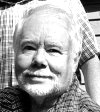 |
|
wild orchids of North America written by Paul Martin Brown, a research associate at the University of Florida Herbarium at the Florida Museum of Natural History in Gainesville, Florida. Together the two men have spent more than 50 years exploring the wilds of New England and much of North America in search of wild orchids. Many if their exploits have resulted in the publication of species of orchids new to science. Like Brown, Folsom is a summer resident of Acton, Maine, and retired from being an art teacher. He received an undergraduate degree from Massachusetts College of |
Art and a master’s degree of Fine Arts and a PhD at Pennsylvania State University. His primary medium is watercolor and his work is represented in several permanent collections including the Federal Reserve Bank of Boston. Stan’s work appears in Wild Orchids of Florida, The Wild Orchids of North America North of Mexico, Wild Orchids of the Southeastern United States North of Peninsular Florida, Field Guide to Wild Orchids of Texas, Wild Orchids of the Canadian Maritimes and Northern Great Lakes Region, Wild Orchids of the Prairies and Great Plains Region of North America, Wild Orchids of the Northeast: New England, New York, Pennsylvania, and New Jersey, and Wild Orchids of the Pacific Northwest and Canadian Rockies.
-
fonta'na/fonta'num: pertaining to springs or
fountains, growing in fast-running water, from fons, "spring." Taxa in California include Montia fontana, Oxalis fontana, Cerastium fonanum and Toxicodendron fontanum.
-
fontina'le/fontina'lis: same as fontana.
-
forbes'ii: named for Charles Noyes Forbes (1883-1920), a curator of botany at the Bernice Pauahi Bishop Museum of Polynesian Ethnology and Natural History (now simply named the Bishop Museum) in Hawaii. He was born in Boyleston, Massachusetts, and his early education was at the Ray School in Southborough, Massachusetts at a high school in National City, California. He attended the University of California, graduating with a BS degree in 1908. As an undergraduate he worked as a cadet for the emergency service during the 1906 San Francisco earthquake. He discovered a new species of cypress in 1907, which Willis Lynn Jepson later named Cupressus (now Hesperocyparis) forbesii in his memory in 1922. In 1908 he moved to Hawaii and was employed at the Bishop Museum as an assistant in botany and then quickly promoted to curator of botany, developing their small collection of plants into a comprehensive herbarium of the Hawaiian flora. In his explorations he collected many taxa and discovered many species new to science, some of which are named for him. He married in 1913 and had three children. In 1919 he was the first botanist who explored the flora of the Haleakalā bog in eastern Maui. Among the plants which were scientifically described by Forbes are several which are either very rare or even extinct, including Cyanea parvifolia, Hibiscadelphus bombycinus and Clermontia tuberculata. At the time of his unfortunate demise at the age of 36 he was due to undertake a botanical survey to Samoa and Tonga as part of the Bayard Dominick Expedition. He was due to undertake a botanical survey of Tonga and Samoa at the time of his death. I have been unable to determine his cause of death at such an early age.
-
Forestier'a: many sources such as Umberto Quattrocchi’s CRC World Dictionary of Plant Names, Gledhill’s The Names of Plants, Stearn’s Dictionary of Plant Names for Gardeners, A.W. Smith’s Gardener’s Handbook of Plant Names, Petrides’ Field Guide to Western Trees, SEINet, and others have mistakenly attributed the authorship of this generic name to an early 19th century French physician and naturalist named Charles Le Forestier. However, David Hollombe's researches have indicated otherwise. A communication from him included the following: "There was a botanist Charles Le Forestier (1778-1850) (co-author with Louis François Henri Lefebure of Album floral des plantes indigènes de France, Paris, 1829) but he was not a doctor and not the person for whom Forestiera was named. Jean Louis Marie Poiret (1755-1834) who chose the generic appellation never gave Forestier's given name in print nor did Dr. Forestier's two published articles (neither of them on botany). In 1897 Father Antoine Düss, a Swiss priest and botanist writing a flora of the French West Indies [ Flore phanérogamique des Antilles françaises] assumed that the genus was named for Charles and in 1913 Britton and Brown [in An Illustrated Flora of the Northern United States and Canada] combined the fact that the genus was named for a physician with the incorrect name." Some of the authors of the above listed works may have changed their minds since publication, and the Jepson Manual now lists André Robert Forestier (1742-1812), the son of Aimé and Marie, and a native of Paris, a doctor of medicine and a physician of the town hospice of Saint-Quentin, Aisne, which was Poiret's home town, and he was Poiret's first botany teacher. David Hollombe has confirmed this information, as has my friend Jose Mari Mut’s Plant Genera Named After People (1753-1853). He got his doctorate of medicine at Rheims in 1765 and was arrested and imprisoned in 1793 due to some political dispute. He died at the age of about 70 on Oct. 6, 1812, in Saint-Quentin. The genus Forestiera was published by Jean Louis Marie Poiret in 1810.
-
-forme/-formis: from the Latin forma, "shape, figure,
appearance, nature," this is a suffix commonly applied to nouns,
e.g. fusiforme, "spindle-shaped," cithariforme, "lyre-shaped,"
filiformis, "thread-like," spiciformis, "spike-shaped,"
lentiformis, "lens-shaped," claviformis, "club-shaped."
-
formica'ra/formicar'um: said to refer to ant-like 'creeping' of the
seed as the awn curls and uncurls, from the Latin formica,
"ant."
-
formo'sa/formo'sum/formo'sus:
finely formed, handsome, beautiful.
-
formosan'us: of or from or referring to the country of Taiwan, formerly
Formosa.
-
formosis'sima/formosis'simus: very handsome or beautiful.
-
Forrest'ia: named for Thomas Forrest (1747-1825), an American politician and artillery officer during the Revolu-
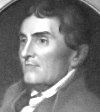 |
|
tionary War. He was born in Philadelphia and attended local schools. He was commissioned as a Captain in the Pennsylvania Artillery Battalion and led a company of artillery at the Battle of Trenton in 1776 where his unit made a significant contribution to the victory there. He was promoted to Major in 1777, Lieutenant Colonel in 1778, and resigned in 1781. He was elected to the 16th Congress and served as chairman of the Committee on Agriculture created on May 3, 1820. He was again elected to the 17th Congress but was defeated for reelection to the 18th Congress in |
1822. He died in Germantown, which was a part of Philadelphia. The genus Forrestia was published in his honor in 1834 by Achille Richard.
-
Forselles'ia: named for Jakob Henrik af Forselles (1785-1855), a Swedish
botanical writer born in Finland. He had
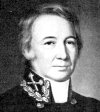 |
|
originally thought to become a doctor and studied botany but instead began to follow astronomical observations at Uppsala observatory. His botanical interests were increasing and he collected in both Finland and Sweden. He turned his hand to shipbuilding for a while, then got a master’s degree in 1806 in Uppsala. He was a mining engineer, lecturer at the Mountain College, director of geological surveys in Sweden 1838-55, and member of the Swedish Academy of Sciences, but it appears that most of his professional work involved copper and silver mines, and iron ore fields. |
He was a member of the Linnaean Institute established in Uppsala in 1800. He was married to Maria Elisabeth Elfvendahl. The genus Forsellesia in California contains a small but highly
variable group of species that has undergone taxonomic revision and
is now placed by Jepson in the genus Glossopetalon of the family Crossosomataceae, where one of its species, stipulifera,
was placed before being moved by Munz into Forsellesia. The genus Forsellesia was published in 1893 by Edward Lee Greene. (Photo credit: Geni)
-
forsling'ii: named for Clarence Luther Forsling (1893-1981), careerist with the US Forest Service who specialized in
 |
|
range management, grazing, and watersheds. He was born in Cheyenne, Wyoming, and graduated from the University of Nebraska in 1915. The following is quoted from a website of the Forest History Society: “He directed the Great Basin Experiment Station from 1922 until 1929, when he founded and directed the Intermountain Regional Experiment Station. He directed the Appalachian Forest Experiment Station from 1934 until 1937, and in 1935 spent three months in Europe as an Oberlaender trust fellow. From 1937 to 1944, Forsling served as US Forest Service assistant |
chief in charge of research, and in 1944 he became the director of the Grazing Service. When the Grazing Service merged with the General Land Office in 1946 to form the US Bureau of Land Management, Forsling continued to work as a special assistant to the Secretary of the Interior until 1953. He settled in Albuquerque, New Mexico, where he served as director of forest and watershed research for the Charles Lathrop Pack Forestry Foundation (1956-1958), and served the State of New Mexico as chief tax commissioner (1955-1956) and member of the State Parks and Recreation Committee (1963-1969). Forsling authored and co-authored many government publications and articles in professional journals on the topics of range management, grazing, and watersheds.” (Photo credit: Harry S. Truman Presidential Library and Museum)
-
fortunea'na/Fortunel'la: named for Robert Fortune (1812-1880), a Scottish botanist and plant collector born in Kelloe,
 |
|
Berwickshire. PlantExplorers.com says: “Robert Fortune was typical of many plant hunters in his day; a mystery wrapped in an enigma wrapped in a surly personality.” He began working as an apprentice gardener in a nearby garden, proceeding from the Royal Botanic Garden Edinburgh to the London Horticultural Society's gardens at Chiswick. After having been appointed superintendent of the hothouses there, he was chosen to make his first exploratory visit to China for the Society. He learned Chinese, disguised himself as a native, and spent three years in the country, |
managing to enter areas then closed to Europeans. At the end of that period and surviving shipwreck, robbery and fevers, he returned to England and brought with him a mass of ornamental plants including the Japanese anemone ( Anemone hupehensis var. japonica), bleeding heart ( Dicentra spectabilis), and the fan palm ( Trachycarpus fortunei). He also brought back orchids and other plants from Java and Manila. Upon his return he was appointed as curator of the Chelsea Physic Garden, a position which he held for two years before once again going to China on behalf of the East India Company. He was tasked to procure tea plants and to investigate its cultivation and processing. He managed to introduce thousands of seedlings to India, and his work provided the basis for the tea industry in India. Between 1848 and 1853 he worked in China and also visited Taiwan and Japan, from the latter of which he brought back the Japanese kerria ( Kerria japonica) and spotted laurel ( Aucuba japonica). In 1857 he was again in China, this time at the behest of the United States Patent Office. A final trip in 1860 completed his influential career and he retired shortly thereafter. He farmed for a while in Scotland and published several books on his experiences: Three Years' Wanderings in the Northern Provinces in China (1847), A Journey to the Tea Districts of China (1852), A Residence among the Chinese (1857) and Yedo and Peking (1863). He died in 1880 at his home in South Kensington. (Photo credit: Find-a-Grave)
-
forwood'ii: named for surgeon William Henry Forwood (1838-1915). He was born at Brandywine Hundred, Delaware,
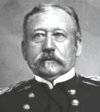 |
|
and was educated at local schools and at Crozier Academy in Chester, Pennsylvania, before receiving a medical degree from the University of Pennsylvania in 1861. He joined the Union Army and was appointed as an assistant surgeon at Seminary Hospital in Washington, D.C. He then served as regimental surgeon of the 14th US Infantry and then medical director of General Sykes’ division, V Corps, Army of the Potomac and was involved in the Peninsula campaign and the battles of Yorktown, Williamsburg, Gaines Mill and Malvern Hill. In February, 1863, he was assigned to the |
6th US Cavalry as assistant surgeon. In May of that year he and several others were captured by a unit of Mosby’s guerillas but he managed to escape from a guard detail and made it back to his regiment. He was captured again during the Gettysburg campaign, but was released. In October the 6th Cavalry was attacked by superior numbers of Confederate soldiers and he received a severe gunshot wound to the chest ending he field service. He was subsequently assigned as the executive officer of Satterlee General Hospital in Philadelphia and then in June, 1864, organized and built Whitehall General Hospital near Bristol, Pennsylvania, commanding that facility until the end of the war. He received brevet promotions of Captain and Major for faithful and meritorious service during the war. He served at Fort Riley, Kansas until 1867, and again saw action in several field expeditions of the 2nd Cavalry against hostile indians along the upper Arkansas River. From 1867 to 1870 he served at Fort Larned, Kansas, and then was assigned to Fort Brady, Michigan, but spent a good deal of this period on a leave of absence studying yellow fever at a quarantine station near Philadelphia. His next assignment was Fort Richardson, Texas, followed by three years of brief assignments in North and South Carolina and Georgia. Wikipedia continues that: “In December 1879, Forwood was transferred to Fort Omaha as the post surgeon. During the next three years, he served as a surgeon and naturalist for the annual military reconnaissance and exploring expeditions ordered by General Philip Sheridan. In November, 1882, he was assigned to Chicago as the attending surgeon for the headquarters of the Division of the Missouri. He again accompanied the exploring expedition in the summer of 1883, this time in the company of President Chester A. Arthur and Secretary of War Robert T. Lincoln. He published his observations from these expeditions in 1881 and 1882. He remained at Chicago until December, 1886. Following another leave of absence, he then served for three years as the post surgeon for Fort Snelling. On May 27, 1890, Forwood was assigned as an attending surgeon at the United States Soldiers’ Home in Washington, D.C., where he remained until December 12, 1898. He was promoted to Lieutenant Colonel on June 15, 1891, and was appointed the professor of military surgery when the Army Medical School was organized in 1893. From 1895 to 1897 he chaired the departments of surgery and surgical pathology at Georgetown University. On May 3, 1897, he was promoted to Colonel, ranking only behind the Surgeon General in the Medical Corps. He chaired the Department of Military Surgery at the same university from 1897 to 1898 and received an honorary degree of LLD for his contributions. Forwood departed the university in the summer of 1898 to establish a large hospital and convalescent camp at Montauk, New York to deal with the huge numbers of sick soldiers returning from Cuba. He selected the site and oversaw the construction of a similar facility at Savannah, Georgia later in the same year. In December, 1898, he was transferred to San Francisco, California as the chief surgeon of the Department of California. In 1901 he was assigned to duty in the office of the Surgeon General in Washington, and that fall was made president of the faculty of the Army Medical School. When Surgeon General Sternberg retired, Forwood was promoted to the post on June 8, 1902. He served as the Surgeon General for his last three months before compulsory retirement for age in 1902.” The remainder of his life was spent in Washington, D.C. and he died after an event-filled life and a prolonged illness on May 12, 1915.
-
fosberg'ii: named for Francis Raymond Fosberg (1908-1993), one of the great plant conservationsists who was also
 |
|
interested in ecology, geography, and geology. He was a botanist for the US Geological Survey and the Smithsonian Institution who specialized in the floras of California, South America and Polynesia and authored Flora of Micronesia. He was a prolific collector and author of more than 700 books and papers, also helping to publish A Revised Handbook to the Flora of Ceylon in 1980. According to an article in JSTOR, he was the leading student of our time of island floras, coral reef systems and vegetation. He was born in Spokane, Washington, but grew up in California. He was a |
student at Pomona College, published his first paper, on kelp forests in 1929, and got a BA in botany in 1930. He worked as a plant researcher at the Los Angeles County Museum, specializing in plants from islands on the coast of California and of the desert southwest, and then went to Hawaii in 1930, worked at the University of Hawaii for professor of botany Harold St. John, and took part in the Bishop Museum’s three-month Mangarevan Expedition of 1934 led by malacologist Charles Montague Cooke, Jr., visiting 25 high islands and 31 coral islands and bringing back 15,000 specimens. Fosberg received an MS in botany from the University of Hawaii in 1937 and a PhD from the University of Pennsylvania in 1939. Wikipedia says: “Thereafter he worked at the USDA and was sent to Colombia to identify stands of Cinchona for quinine production. In 1946 he participated in an economic resources survey in the Micronesian Islands. He returned to the United States and began doing vegetation work for the Pacific Science Board under the National Research Council with his new assistant, Marie-Hélène Sachet. In 1951, Fosberg and Sachet began working at the United States Geological Survey where they were responsible for mapping the military geology of islands in the Pacific. In 1966 they joined the Smithsonian's National Museum of Natural History in the tropical biology branch of the ecology program. In 1968 Fosberg transferred to the department of botany, where he became curator. In 1976 he became senior botanist, and in 1993 botanist emeritus.” He died at the age of 85 at his home in Falls Church, Virginia. (Photo Credit: Find-a-Grave)
-
fossa'lis: I believe this is from the Latin fossa for "ditch or trench," and -alis, meaning
"pertaining to," since ditches appear to be a place where
this species, Navarretia fossalis, which is the only taxon in California with this epithet, may be found.
-
Fossombro'nia: named for Vittorio Fossombroni (1754-1844), an Italian statesman, mathematician, economist and
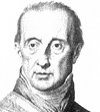 |
|
engineer born at Arezzo in eastern Tuscany. He was educated at the University of Pisa where he studied particularly mathematics and hydraulic engineering and after graduating in 1778 became a professor of mathematics. He obtained an official appointment in Tuscany in 1782 and in 1794 he was appointed by the Grand Duke as general superintendent of the Department of Waters in Val di Chiana. He was tasked with directing the work of draining the marshes and swamps in the area around Arezzo. In 1796 he was appointed minister for foreign affairs, but when the French |
occupied Tuscany in 1799 he fled to Sicily. In 1809 he went to Paris as one of the senators for Tuscany to pay homage to Napoleon, and the emperor commissioned him to draw up a land reclamation project for the countryside around Rome and for the Pontine swamps. Upon the restoration of the Grand Duke Ferdinand III, he became prime minister, which position he retained under the Grand Duke Leopold II. The basic elements of his rule were equality of all subjects before the law, honesty in the administration of justice, and toleration of opinion. He was married at the age of 78 and died twelve years later. The genus Fossombronia was published by Giuseppe Raddi in 1818.
-
fos'teri: named for Robert Howard Foster (1920-2016). He was born in Monroe, Georgia. His parents were farmers.
 |
|
and he attended Monroe High School where he was on the football team, graduating in 1937. He went on to the University of Georgia where he was in the ROTC program. In 1939 he enlisted in the Army Air Corps and when the war started for America, he went to Salt Lake City to train on P-39 fighters. His unit was transferred to Louisiana in preparation for being sent to North Africa, and it was there that he got married to Delora Larsen. The Berg Mortuary obituary says: “Robert was transferred to England in July, 1942, and would spend the next 2 ½ years there in support of |
bombing and fighter missions during the war. After the war he was transferred to the airfield at Wendover, Utah. In 1950 he, Delora and two boys (Steven and Clyde) were transferred to Fairchild Air Force Base in Washington. During the Korean War, Robert was sent twice to Korea where he participated in bombing the North Koreans and Chinese along the DMZ.” At some point he joined the LDS Church and over the course of the 1950s two more children were born and he served at Hurlburt Air Force Base in Fort Walton Beach, Florida, Cannon Air Force Base in Clovis, New Mexico, and Hunter Air Force Base in Savannah, Georgia. In 1960, rather than being sent to Greenland, he put in for retirement and moved his family to Athems, Georgia, where he was accepted into the University of Georgia. He studied geography for four years and graduated with a BS degree in 1964. The family then moved to Provo, Utah, where he entered Brigham Young University, achieving a master’s in geography in 1966 and in 1968 a PhD in botany. Again from the obituary: “Upon graduation Robert was hired as an assistant professor at Western Kentucky University in Bowling Green, Kentucky. The family moved to Kentucky and Robert taught at the university for eight years. In 1970 he became the LDS patriarch for the newly organized Nashville, Tennessee Stake. In 1976 he retired from the state of Kentucky and moved permanently to Provo, Utah. For the next 35 years he and Delora spent fun-filled days doing environmental and vegetation studies for Brigham Young University and the National Park Service all over the Western United States. He also taught on the faculties at Brigham Young University and Utah Valley University. Robert loved his membership in the LDS Church. Over the span of his life in the mission field, he and Delora were responsible for the building of eight new LDS chapels in areas where none had previously existed. He served as a branch president, bishop, in various bishoprics, various district presidencies, on numerous stake high councils, and as a stake patriarch. In 2011 he fell and broke a hip, thus ending a marvelous capability to travel and enjoy the great American out-of-doors. He died on March 20 due to complications with his heart. (Photo credit: Berg Mortuary)
-
Fouquier'ia: named for Pierre Éloi Fouquier (1776-1850), a French physician, translator, writer, professor of medicine
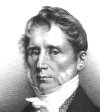 |
|
and naturalist. He was born in Maissemy in northern France and was a member of the Académie de Médecine. He was chief medical officer of the Hospital Charité, professor at the Paris Faculty of Medicine and at the Medical Clinic at Hôtel-Dieu hospital. He was physician for the French Kings Charles X (1757-1836) and Louis-Philippe (1773-1850). He was also the beloved teacher and friend of the German botanist Karl Sigismund Kunth, who first described and named the plant in Fouquier’s honor in 1823. His name is sometimes given as Pierre Éloi Fouquier and sometimes |
as Pierre Edouard Fouquier. He died in Paris in 1850.
-
fournier'i: named for French botanist and pteridologist Eugene Pierre Nicolas Fournier (1834-1884), who was particularly interested in ferns. He was the co-author with Émile Bescherelle of Mexicanas Plantas published in 1876. He was a physician in Paris and a member of the Société Royale de Botanique de Belgique. The genus Fourniera in the family Cyatheaceae was published by Joseph Edouard Bommer in 1874 in his honor.
-
fow'leri: named for the noted Canadian Rev. Dr. James Fowler (1829-1923), an ordained Presbyterian minister,
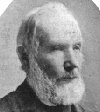 |
|
professor of botany at Queen's University in Ontario, the university's first librarian, author of the first complete catalogs of New Brunswick plants (List of New Brunswick Plants, 1879, Additions to the List of New Brunswick Plants, 1880, and List of Plants of New Brunswick, 1885) and curator of the museum that would eventually become the Fowler Herbarium. His work was the standard reference on New Brunswick plants for over forty years. He was born in New Brunswick and his last name was originally Fowlie, and it is unknown when or why he changed it. He grew up on a |
farm with a gristmill and a sawmill. His father died when he was 14 and he undertook theological studies in Halifax at the Free Church College and was ordained in 1857. He was interested in conchology, geology, meteorology, and particularly in systematic botany, and engaged in various explorations into the natural history of his area as a sideline. In 1876 he resigned his pastorate due to chronic laryngitis and following that he made the first catalog of New Brunswick vascular plants and bryophytes. He went to Kingston, Ontario, in 1880 to assume the position of lecturer in natural science, librarian, and curator of the museum at the Queen’s College and taught geology, botany and zoology. He became a full professor in 1891 and in 1894 the first full-time professor of botany. He retired in 1907 having begun to have significant memory problems but having developed a herbarium of 50,000 specimens of 15,000 different species. It was after he retired that despite his physical difficulties he devoted his full attention to lists of plants found in New Brunswick. He died at the age of 93. (Photo credit: Queen's University)
-
frac'ta: broken, from Latin fractus, "broken."
-
Fragar'ia: from the Latin fraga, "strawberry,"
which derives from fragum, "fragrant," from the fragrance
of the fruit. The genus Fragaria was published by Carl Linnaeus in 1753.
- fragerio'ides: resembling genus Frageria.
-
fragif'erum: meaning "bearing some
strawberry-like structure." A website called Wild
Plants of the British Isles has the following about Trifolium fragiferum:
"The distinctive feature is the fruits which are larger than
the flower and the sepals (calyx) of which become inflated so that
the large pale pink fruiting body is supposed to be a bit like a strawberry
(but not much)."
-
frag'ilis: brittle, fragile, easily broken, from frangere, "to break." Stearn adds sometimes "wilting quickly."
-
-
franchet'ii: named for Adrien René Franchet (1834-1900), a French botanist and taxonomist, based at the Paris
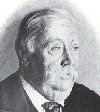 |
|
Muséum National d'Histoire Naturelle. He is noted for his extensive work describing the flora of China and Japan, based on the collections made by French Catholic missionaries in China such as Armand David, Pierre Jean Marie Delavay, Paul Guillaume Farges, Jean-André Soulié and others. He was born in Pezou (Loir-et-Cher), France, and cultivated a love of botany from an early age. He was the taxonomic author of many plants, including a significant number of species from the genera Primula and Rhododendron. He was one of the taxonomists who worked on the collections of |
Émile-Marie Rodinier that were made around Beijing and Yunnan Province. He was the curator of the mineralogical and botanical collections of Cheverny at the Museum of Natural History, Paris, and his main area of interest was the pteridophytes (ferns and their allies) and spermatophytes (seed-bearing plants). Franchet worked at the Botanical Garden in Paris where he specialized in the flora of China and Japan. His work is best known for the two-volume Enumeratio plantarum in japonia (1875-1879) with Paul Amedée Ludovic Savatier, the two-leaf Plantae Davidianae ex Sinarum imperio (1888), and Plantae Delavayanae (1889-1890). He first described Thuja sutchuenensis based on specimens collected in 1892 in Chengkou Province by the French missionary and botanist Paul Guillaume Farges. His father who died when Adrien was young had been a gardener and grape cultivator. When he was a boy of 12 his mother brought him to a pharmacist in Blois and he began learning that trade by going out early in the morning to collect plants in the local woods. But his love of botany diverted his attention and he began attending the seminary school in Blois to complete his early education. He had learned Latin which was essential to the study of plants. In 1857 the Marquis Paul de Vibraye of Cheverny took note of him and offered him a position as curator of his collections of archeology and mineralogy, and he remained there until 1880. “Adrien Franchet worked in the Jardin des Plantes and in the herbarium of the museum from 1881 and specialized in the flora of China, Japan and Loir-et-Cher. He was officially attached, as a trainer, to the Botanical Service in 1886. His first publication on Verbascums (species better known as ‘Molène’ or ‘Bouillon’) made him known in the world of scientists. For his research on exotic plants, he described and classified the collections brought back by the French missionaries in the Far East, Mongolia, Turkestan, and Hong Kong. He also studied the herbarium of the 1890 expedition [to] Central Asia to Tibet and China [of] Prince Henry of Orleans and discovered a lot of new species. He introduced and propagated in France plants useful from the point of view of food, especially the Japanese artichoke called Crosne. During his career, he identified twenty-eight new genera and studied more than two thousand species.” (From Cercle de Recherches Généalogiques) In 1885 he published Flore du Loir-et-Cher. He was in constant contact with botanists from the great botanical institutions of Europe such as Kew, Geneva, Berlin, St. Petersburg, and Brussels. He established a relationship with the famous author of The Natural History of Plants, Henri Baillon, and it was Baillon who published the genus Franchetia in his honor in 1885. Franchet recognized through his study that there was an affinity of the vegetation of the high regions of Central Asia with that of Europe, and it was in this period from 1881 until his untimely death that he produced his most significant works.
-
francisca'na/francisca'num: of or from San Francisco.
A published article on Aphyllon franciscanum says that the name franciscanum "appears to refer to the type locality of the San Francisco Bay Area (Mount Tamalpais, California) or the underlying geology, which has been referred to as “Franciscan” in various senses since the 1800s."
-
franciscen'sis: see previous entry.
-
Franco'a: named for Francisco Franco (c.1515-?), a Spanish doctor who concentrated on infectious diseases, personal physician of King Joao III of Portugal. After graduating from the University of Valencia, he studied medicine at the University of Alcalá where he graduated in 1543 and received a doctorate. He was a professor at least between 1543 and 1545, and between 1549 and 1555 he resided in Portugal where he worked as a professor at the University of Coimbra. After traveling through Europe he was appointed professor at the University of Seville in 1560. He lived in this city until his death, which occurred on an uncertain date sometime after 1569. He also founded a botanical garden there. The genus Francoa was published in 1801 by Antonio José Cavanilles.
-
Fran'gula: the CRC World Dictionary of Plant Names says: "Perhaps derived from the Latin frangere, 'to break'." Other related roots are frango, "to break," or frangulus, "fragile." A personal communication from John Kartesz supplied the information that the name refers to its extremely brittle wood. The species alder-buckthorn, Rhamnus frangula, bears a fairly old name, and the bark of that tree contained a glucoside with purgative or laxative qualities that was named frangulin by a chemist named Arthur Casselmann. The European species, alder buckthorn ( Frangula alnus) was of major military importance in the 15th to 19th centuries, as its wood provided the best quality charcoal for gunpowder manufacture.The genus Frangula was published by Philip Miller in 1754.
-
Franken'ia: named for Johannes (Johan) Frankenius (1590-1661), sometimes written as Franke or Franckenius or Franck, a Swedish alchemist and botanist, professor of anatomy, medicine and botany at Uppsala, and the first writer on Swedish plants, author of Speculum botanicum, and a colleague of Linnaeus, who praised him as a pioneer in Swedish botanical history. He was raised in Stora Kopparberget along with his brother Matthias. His first treatise, in 1629, De transmutatione metallorum, involved the transmutation of metals, and was a defense of alchemy. His second dissertation, in 1645, De principiis constitutivis lapidis philosophici, dealt with the properties of sulphur and mercury. His most remarkable text was dedicated to Queen Christina, who had an abiding interest in alchemy, and apparently hoped that through alchemy she could change her gender to male. This work, produced in 1651, was entitled Colloquium philosphicum cum diis montanis. He was also Sweden’s first teacher of chemistry. The genus Frankenia was published in 1753 by Linnaeus.
-
Franser'ia: named for Antonio Franseri (1745-1830), a Spanish doctor born in Valencia and who studied there. He was a clerk in Madrid and was associated with the academies of Paris, Seville, Barcelona and Cartagena. From 1785 he was a physician to the royal family. In 1803, he accompanied Ferdinand VII into exile in France during the War of Independence and, after his return, he held senior positions at the faculty of medicine in Madrid. The genus Franseria was published by Antonio José (Joseph) Cavanilles in 1793.
-
Fra'sera/fraseria'na: named for John Fraser (1750-1811), a well-known Scottish-born nurseryman and collector of
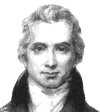 |
|
North American plants who moved to London in 1770. He worked initially as a draper and was introduced to botany through his visits to the Chelsea Physic Garden. He began his botanical collecting career after sailing to Newfoundland in 1780, and then again to the New World in 1783. He established the American Nursery in King’s Road sometime in the 1780s and it was continued by his son after his death. He explored a significant portion of the new country from the Appalachians to the Alleghanies and the American south, shipping many new species to England |
and beyond. He and his brother James operated two nurseries in the vicinity of Charleston, S.C. at least from 1791 to 1800 where they could grow the plants that were part of their business which exported American plants to England. In 1796 he traveled to Russia and sold a large collection of American plants to Czarina Catherine II, botanized around St. Petersburg, and after Catherine's death continued his botanical entrepreneurship with Maria Federovna, wife of Czar Paul I, who was a botany enthusiast herself. In 1800 he and his son John, Jr. were in America again, visiting Thomas Jefferson at Monticello, and traveling through Kentucky, Tennessee and Georgia. He also collected plants in the West Indies and nearly came to a bad end in a shipwreck off the coast of Cuba in 1801, a mishap which he and his crew were fortunate to survive. Altogether he made seven voyages to America and it was during the last of these in which he fell from a horse near Charleston, S.C., breaking several ribs, an injury that he never recovered from, and which undoubtedly shortened his life. Business difficulties and his frequent absences from the nursery caused financial problems, and he was considered bankrupt at his death. His herbarium was sold to the Linnean Society. J.C. Loudon in the Botanical Magazine of 1838 said that he was “One of the most enterprising, indefatigable, and persevering men that ever embarked in the cause of botany and natural science.” This information is mostly from Wikipedia and from from Marcus Simpson, Jr., "Biographical Notes on John Fraser," Archives of Natural History (1997) 24 (1): 1-18. The genus Frasera was published in 1788 by Thomas Walter.
-
frax'ino-praten'sis/fraxinipraten'sis: of Ash (Fraxinus) Meadows in Nevada. The taxon in the California flora is Grindelia fraxinipratensis, called Ash Meadows gumweed. The article entitled "Revision of the North American Species of Grindelia" by Adriana Bartoli and Roberto Tortosa in Annals of the Missouri Botanical Garden (May 2012) says that fraxinipratensis is an epithet that was orthograpically corrected from fraxino-pratensis, and means "growing in the fields of ash trees."
-
Frax'inus: a classical name for the ash
genus. Wikipedia says that the name originated in Latin from a Proto-Indo-European (PIE) word for birch, and that word is also used to mean "spear" in their respective languages, as the wood is good for shafts. The genus Fraxinus was published by Carl Linnaeus in 1753.
-
Free'sia: named for Friedrich Heinrich Theodor Freese (1795?-1876), a
German physician-botanist who studied South African plants. He was
a friend and pupil of the Danish botanist and professional plant collector
Christian Friedrich Ecklon. This plant was first discovered in South
Africa. The genus Freesia was published by Christian Friedrich Ecklon in 1866.
-
fremont'ii: named for John Charles
Frémont (1813-1890), "the Pathfinder," an Army officer and presidential candidate
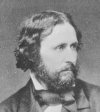 |
|
who collected plants on four hazardous journeys
exploring the western United States. Best known for cartography
and exploring, he was intensely interested in all natural sciences.
A member of the 1839 expedition of French explorer Joseph Nicolas
Nicolett, he helped to map the region between the upper Mississippi
and Missouri rivers. Nicolett tutored him in geology, topography and
astronomy, and with that knowledge he surveyed the Des Moines River
in 1841. Subsequently (1842-1845), after taking a quick course in
collecting and preserving plant specimens from George |
Engelmann in
St. Louis, he led three expeditions of exploration and survey into
the Oregon Territory. His explorations in 1843 led him to the Great
Salt Lake area, about which not a great deal was known, and his reports
of this expedition have been credited for giving the Mormons their
first idea of settling in Utah. He mapped much of the Oregon Trail
to the mouth of the Columbia River, crossing the Sierra Nevada Mountains
in the middle of winter. He fought in the Mexican War (1846-1848)
before becoming a millionaire in the 1848 gold rush and then assisting
with the annexation of California, eventually being appointed the
civil governor. He became embroiled in a dispute between U.S. Navy
Commodore Robert F. Stockton and US Army Brigadier General Stephen Watts
Kearny, refusing to follow the latter's orders, and was arrested and
court-martialled. President Polk intervened, changing his sentence
from dismissal from the service, and allowing him to resign his commission.
He was elected one of the first two senators from California in 1850,
taking his seat the day after the admission of California into the Union,
and served until 1851, when because of the decline in popularity of
the antislavery party in California, he failed to be re-elected. He
spent a year in Europe (1852-1853), being received by eminent scientists
and politicians in several countries. In 1856 he became the
first Republican Party presidential candidate but was defeated by
James Buchanan. Back in the army, he served unsuccessfully as a Major General in the
Civil War, making his headquarters at St. Louis in July, 1861, and
proclaiming martial law in August. His strong antislavery stance
led him to issue a proclamation of emancipation regarding the slaves
of Missouri, a position which President Lincoln was not ready to adopt
and unsuccessfully urged him to reconsider, and forcing the president
to annul. The secretary of war was pursuaded to investigate many charges
of arbitrary behavior and inefficient administration against him, and
he was finally relieved of his command in 1862, whereupon he returned
to St. Louis and was immediately given a new command. Although his
army saw action, it was eventually incorporated under the command
of General Pope, at which time Frémont once again decided he had effectively
been removed from a command position and asked to be relieved, thus
ending his Civil War career. In 1864 he was asked to be the nominee
for president by a group of Republicans unhappy with Lincoln, and
while he at first accepted, he later withdrew for the good of the
party. After the war he became interested in establishing a southern
transcontinental railroad route, but agents of his company misrepresented
bonds they were trying to sell as guaranteed by the US government
and this venture failed. From 1878 to 1883 he served as the appointed
governor of the territory of Arizona. His wife was the daughter of
the famous Missouri senator Thomas Hart Benton, the Democratic Party
leader in the Senate for three decades, and she helped him turn his expedition notes into highly readable and ultimately very popular
reports. His association with Benton had a great deal to do
with his success as a mapmaker and surveyor, and it was Benton who
was largely responsible for getting Frémont the leadership of many
of his expeditions. Benton was a champion of the expansionist movement
known as "Manifest Destiny" and saw Frémont as a talented
explorer and promoter of the West. Frémont had a way with words and
his beautiful descriptions of western landscapes appealed to the reading
public and greatly encouraged settlement there. Ultimately poor
business judgement resulted in his losing most of the wealth he had
acquired and he was forced to live off his wife's earnings. Few
Americans have lived such a turbulent and event-filled life. Although
his personality verged at times on the dictatorial, he was probably
never happier than when with a group of hardy adventurers he could
be free to explore the little-known regions of the vast western territories,
risking all and suffering great hardships and difficulties. He contributed
greatly to geography and named the Great Basin, of which he was the
first to appreciate the immensity and the fact that it had no outlet
to the sea, and Fremont Peak in the Wind River Mountains bears his
name today. Despite his apparent accomplishments, were it not
for his network of connections and his knack for political expediency,
he probably would have been a failure many times over. He had little
moral sense and allowed greed and ambition to rule him. A line from
an LA Times review of a new biography of Frémont seems to sum him
up admirably: "He turned golden promise into the dross of failure."
The name of Charles Frémont is well known to California botanists
because of the Fremontia and the Fremont cottonwood, in addition to
a substantial number of other plants named for him.
-
Fremontoden'dron: see fremontii above.
The genus Fremontodendron was published by Frederick Vernon Coville in 1893.)
-
fresnen'sis: or or from Fresno.
-
frig'ida: cold, from Latin frīgidus, “cold,” from frīgeō, “I am cold,” from frīgus, “cold, coldness.”
-
Frisvol'lia: named for Arne Arnfinn Frisvoll (1944- ), a Norwegian botanist and bryologist, author of Checklist of Norwegian Mosses, Moss flora in Borrsåsen-Børøya-Lower Tynes near Levanger, Surveys of moss flora in Tromsdalen in Verdal and Levanger, Nord-Trøndelag and Mosses of Norway and Svalbard. The genus Frisvollia was published in 2015 by Jakub Sawicki, Monika Szczeciska, Halina Krystyna Bednarek-Ochyra and Ryszard Ochyra.
-
Fritillar'ia: derived from the Latin fritillus,
meaning "a dice-box," and possibly referring to the shape
of the seedpod or the checkered sepals on the flowers. Jepson Herbarium says from fruit shape. A website of the Chicago Botanic Garden says " The genus name Fritillaria comes from the Latin fritillus, meaning dice-box, apparently because the flowers of some species have geometric patterns of spots reminiscent of the dots on dice. The same reasoning gave us 'fritillary' as the common name for some spotted butterflies." The genus Fritillaria was published by Carl Linnaeus in 1753.
-
froebel'ii: named for Julius Fröbel (Froebel) (1805-1893), a German mineralogist,
educator, and nephew of Friedrich
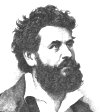 |
|
Fröbel (the founder of the kindergarten
system of education). "Born in Greisheim, Germany, Julius was
educated at the Universities of Jena, Munich, and Berlin, and in 1833
became a naturalized citizen of Switzerland. He joined the extreme
radical party, edited the "Swiss Republican," and issued
several scientific works and political pamphlets, many of which were
suppressed in Ger- many. In 1848 he was elected a member of the German
parliament that met at Frankfort, and afterward accompanied the radical
Robert Blum to Vienna, where he was arrested and condemned |
to death
by the court martial that convicted Blum, but was pardoned before
the date fixed for the execution. On the dissolution of the parliament
he visited the United States, where he became editor of a German newspaper,
lectured in New York City, and in 1850 went to Nicaragua, Santa Fe,
and Chihuahua as correspondent of the New York Tribune.
He returned to Germany in 1857, and efforts were made to expel him
from Frankfort. but he was protected on the ground of his naturalization
as a citizen of the United States. In 1862 he went to Vienna, took
an active part in liberal politics, and became a leader of the Federalist
party. In 1873 he was appointed consul of the German Empire at Smyrna,
Asia Minor. His works are System of Social Politics (London,
1847), The Republican, an historical drama (1848), Seven
Years' Travel in Central America, Northern Mexico, and the Far West
of the United States (1859), Theory of Politics (1861), and Political Addresses (1870)." [Information
from Virtual
American Biographies] His studies of Mayan architecture and linguistics
are still used extensively.
-
Froe'lichia: named for Josef Aloys von Frölich (1766-1841), a German botanist, entomologist, zoologist and physi-
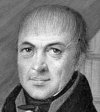 |
|
cian. He described many species in the genus Hieracium. He was born in Marktoberdorf in the Bavarian district of Ostallgäu. He studied at the Universities of Ingolstadt, Erlangen and Vienna. He graduated in medicine in 1796 at Erlangen, with the unusual dissertation "De Gentiana Dissertatio" about the gentian. He also studied particularly the genus Crepis and was interested in bryophytes. As a zoologist he was considered a pioneer of helminthology, the study of parasitic worms in the class Linguatulidae. In 1798 Frölich was elected a member of the Leopoldina or German National |
Academy of Sciences. In his spare time, he pursued natural history studies, in particular botanical research, which soon made him famous in scientific circles. He was quite a moss authority and created through his own collections and exchanges with other botanists an extensive herbarium. The botany professor Hugo von Mohl (1805-1872), founder of the first natural science faculty in Germany in Tübingen, has called Frölich his spiritual foster father. The genus Froelichia was published by Conrad Moench in 1794.
-
frondo'sa/frondo'sus: leafy, from Latin frondosus, "leafy, full of leaves," from frons or frond, "a leafy branch."
-
frost'ii: named for American botanist Charles Christopher Frost (1805-1880). He was born in Brattleboro, Vermont. At
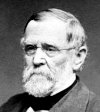 |
|
an early age developed a genius for mathmatics, later a love of botany and its allied subjects in natural history, but left school at the age of 15 after having been hit by a teacher with a ruler. His father was a shoemaker and he first went to work assisting in his business, remaining in the shoe trade for 50 years. His interest in botany grew after meeting with physician Willard Parker, who recommended Frost undertake botanical walks to alleviate the symptoms of his dyspepsia. Frost started studying the mosses and lichens he encountered on these walks. He later investigated |
fungi, particularly the bolete mushrooms. Wikipedia says: “He described several species of fungi from the New England area of the United States. In one paper, Frost described 22 new species of boletes, and he was later credited with the discovery of three additional species. His personal herbarium of specimens was given to the University of Vermont in 1902. Portions of his collection today are distributed between the Farlow Herbarium at Harvard University, the New York State Museum, the Bell Museum of Natural History, and the Buffalo Museum of Science.” The degree of AM was conferred on him by Dartmouth and Middlebury Colleges; he became corresponding member of societies for the advancement of learning in the United States and was elected a member of numerous scientific societies in both America and Europe. He died in Brattleboro.
-
Frullan'ia: named for Leonardo Frullani (1756-1824), an Italian jurist and politician. He was born in San Giovanni alla Vena near Pisa. His parents were small landowners and he received education first from an uncle, later attending the University of Pisa where he graduated with a law degree in 1776. He came to the attention of Pietro Leopoldo, the new Holy Roman Emperor Leopold II and his son Ferdinando, the future Grand Duke Ferdinand III of Tuscany. In 1794 he became a government councilor in Livorno and in 1798 lieutenant governor of Livorno. This was just before and during a time (1800-1814) when the French were occupying part of Italy. After the Tuscan Restoration, as minister of finance for the Tuscan duchy, he became part of a triumvirate with Vittorio Fossombroni (see Fossombronia), secretary of state and minister of foreign affairs, and Neri Corsini, minister of the interior, at the head of Tuscan politics. He worked for the consolidation of finances and for the restoration of the traditional pre-French Tuscan liberal economic guidelines. He supported the Grand Duke throughout the remainder of his life, and despite never being a great financial expert managed to balance the state budget, and inaugurated a partnership between state and private individuals for the exploitation of mineral resources. In 1815 the Grand Duke granted him hereditary nobility. One of his sons was Guliano Frullani, professor of mathematics at the University of Pisa, and the other was Emilio Frullani, a lawyer and poet. Leonardo Frullani died in Florence. Giuseppe Raddi published the genus Frullania in 1818.
-
frutes'cens: somewhat or becoming shrubby or bushy, from Latin frutex, "a shrub or bush."
-
frut'icans: same as frutescens.
-
fruticifor'mis: having the form of a shrub.
-
frutico'sa/frutico'sum:
from the Latin frutex, "a shrub," therefore, shrubby,
bushy.
-
fruticulo'sa: Harris and Harris's Plant
Identification Terminology says that fruticulose means "somewhat
shrubby, small and shrubby" and this corresponds with the meaning
of the - ulosa suffix in such names as "strigulosa," "lanulosa," "spinulosa"
and "tomentulosa."
-
fuca'tum: painted, dyed, from Latin fucatus, meaning "painted, colored, or rouged."
-
Fu'chsia: named for Leonart (Leonhard) Fuchs (1501-1566), a German physician and herbalist, one of the first modern
 |
|
makers of Latin-form plant names. He is considered by some as the third of the 'founding fathers' of botany, with Otto Brunfels (1488-1534) and Hieronymus Bock (1498-1544). He was born in Wemding in the Duchy of Bavaria. Wikipedia says: “After attending a school in Heilbronn, Fuchs went to the Marienschule in Erfurt, Thuringia, at the age of twelve, and graduated as Baccalaureus artium. In 1524 he became Magister Artium [Master of Arts] in Ingolstadt, and received a doctor of medicine degree in the same year. From 1524- 1526 he practiced as a doctor in Munich, until he |
received a chair of medicine at Ingolstadt in 1526. From 1528-1531 he was the personal physician of Georg, Margrave of Brandenburg-Ansbach in Ansbach. Fuchs was called to Tübingen by Ulrich, Duke of Württemberg in 1533 to help in reforming the University of Tübingen in the spirit of humanism. He created its first medicinal garden in 1535 and served as chancellor seven times, spending the last thirty-one years of his life as professor of medicine.” In 1542 he published a book, De Historia Stirpium Commentarii Insignes ("Notable commentaries on the history of plants"), about plants and their medicinal uses with drawings of plants that were higher quality than any previously published. In his classes he conducted botanical field trips for his students, where he demonstrated the medicinal plants in situ, and founded one of the first German botanical gardens. The color fuchsia does not as is often thought derive directly from Leonhart Fuchs’ name, but from the color of the fuchsia plant. It contained a magenta-colored dye called rosaniline hydrochloride which had an early trade name of fuchsine and was manufactured first by Renard Frères et Franc and patented in 1859 by the French chemist François-Emmanuel Verguin. The plant fuchsia was originally named by Charles Plumier in 1703 for Fuchs, and published in 1753 by Carl Linnaeus. The word ‘fuchs’ is German for fox.
-
fue'ginus: of or from Tierra del Fuego.
-
fu'gax: withering or falling quickly, fleeting, from fugere,
"to flee," and the Latin adjectival suffix -ax meaning
an inclination or tendency to something.
-
fulcra'ta/fulcra'tus: from the Latin fulcrum, "a prop," and fulcio, "to support," resulting in the word "fulcrum," (plural:
"fulcra") which is an appendage, like a bract, tendril or
stipule. Gledhill says the meaning is "having supports, thorns, hooks or tendrils." The word fulcrate means "having a fulcrum, propped, supported by accessory organs, furnished with fulcrums." In California the taxon Lupinus fulcratus is called greenstipule lupine.
-
ful'gens: shining, from Latin fulgere, "to shine."
-
fullon'um: relating to fullers or people who full cloth, a process
of shrinking or thickening cloth by moistening, heating and pressing.
The species Dipsacus fullonum, the only one in California with this epithet, is sometimes referred to as fuller's teasel, although the Jepson Manual calls it wild teasel and D. sativus as fuller's
teasel. The connection to fullers is that it has bristly flower heads
used by fullers to raise the nap on cloth.
-
ful'va/ful'vus: of a fulvous color, tawny, orange-gray-yellow, from Latin fulvus, "reddish-brown." Difficult to pin down exactly what this color is, Wiktionary says "reddish-yellow, tawny, amber-colored." Wikipedia says "dull orange, brownish-yellow or tawny; it can also be likened to a variation of buff, beige or butterscotch." The Missouri Botanical Garden's Grammatical Dictionary of Botanical Latin, lists all the possibilities: " fulvous, tawny, dull yellow with a mixture of gray and brown (Lindley), yellowish-brown (Stearn), dull yellowish-brown (S&D), lion-colored; deep yellow, reddish yellow, gold-colored, tawny; (fungi) “reddish-cinnamon-brown; also tawny, reddish-yellow” (S&D); leochromus,-a,-um, the color of lions; “tawny; dull yellow-brown” (Magill 1990); fulvo, reddish-yellow (Lewis & Short)."
-
fulves'cens: becoming tawny in color.
-
ful'vidus: slightly tawny.
-
Fumar'ia: from the Latin fumus, "smoke," possibly
because of the color or odor of the fresh roots, although another source says: "[Linnaeus] derived the name from the Latin fumus terrae, "smoke of the earth," alluding to the smoke-like smell of some species or to smoke rising from the ground." The genus Fumaria was published by Carl Linnaeus in 1753.
-
Funast'rum: from funis, "a rope, cord, sheet," and -astrum, "incomplete resemblance." Jepson Herbarium says "fleshy crown or wreath, from sac-like filament column appendages of some species." A number of sources say that the suffix - astrum refers to the twining stems, but I can find no etymological evidence for that. The genus Funastrum was published in 1882 by Eugène Pierre Fournier.
-
funer'ea/funer'eus/funer'eum: pertaining
to death or a funeral, or of the Funeral Mts.
-
funstona'nus/funston'ii: named for Frederick Funston (1865-1917), aka ‘Fighting Fred Funston’ and ‘Fearless
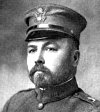 |
|
Freddie,’ a teacher, botanist, explorer, railroad agent, journalist, soldier and recipient of the Medal of Honor. He was born in New Carlisle, Ohio, and at the age of two moved with his family to Allen County, Kansas, where his father was elected to the United States House of Representatives. Wikipedia says: “He worked as a trainman for the Santa Fe Railroad before becoming a reporter in Kansas City, Missouri, in 1890. After one year as a journalist, Funston moved into more scientific exploration, focusing primarily on botany. First serving as part of an exploring and surveying |
expedition in Death Valley, California. In 1891, he then traveled to Alaska to spend the next two years in work for the United States Department of Agriculture.” He was part of the Cuban revolutionary army that was fighting for independence from Spain in 1896 and then was commissioned as a Colonel of the 20th Kansas Infantry in the United States Army in 1898. Later that year he married and within two weeks he was in the Philippines, where he received the Medal of Honor for conspicuous bravery. He was in command of the Presidio of San Francisco when the 1906 San Francisco earthquake hit, and in an attempt to respond to the crisis, he issued controversial orders that he was not entitled to give. From December, 1907, through March, 1908, he was in charge of troops at the Goldfield mining center in Esmeralda County, Nevada. Subsequent positions that he held included Commandant of the Army Service School in Fort Leavenworth, Commander of the Department of Luzon in the Philippines, Commander of the Hawaiian Department, and Commanding General of the army's Southern Department during the conflict with Mexico in 1914 to 1916 during which American forces invaded Vera Cruz amidst the Mexican Revolution. President Woodrow Wilson favored Funston to head any American Expeditionary Force for WWI. His intense focus on work led to health problems, first with a case of indigestion in January, 1917, followed by a fatal heart attack at the age of 51 in San Antonio, Texas.
-
fur'cans: forked, from Latin furca, "a fork."
-
furca'ta/furca'tum/furca'tus: furcate, forked, from Latin furca, "a fork," and furcatus, "forked."
-
furcatip'ilis: with forked hairs, from the Latin furcatus,
"forked or cleft," and pilus, "a hair."
-
furco'sum: from the Latin furca, "a fork," and -osum,
a Latin adjectival suffix indicating an abundance of or a marked or full
development of, thus "very forked."
-
fus'ca/fus'cus: dark or brown, from Latin fuscus, "dark, swarthy, dusky, dark-skinned."
-
fusca'ta/fusca'tum: brownish.
-
fusifor'me/fusifor'mis: spindle-shaped, i.e. thickest in the middle
and tapering toward both ends, from Latin fusus, spindle.”
|

